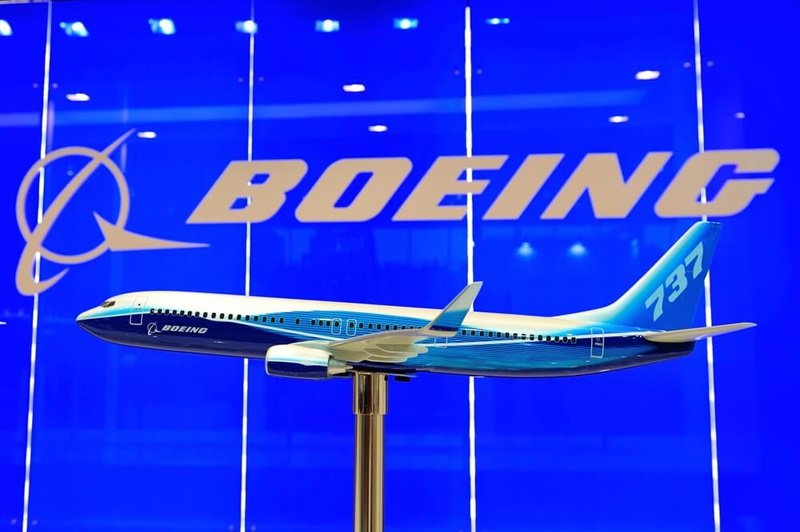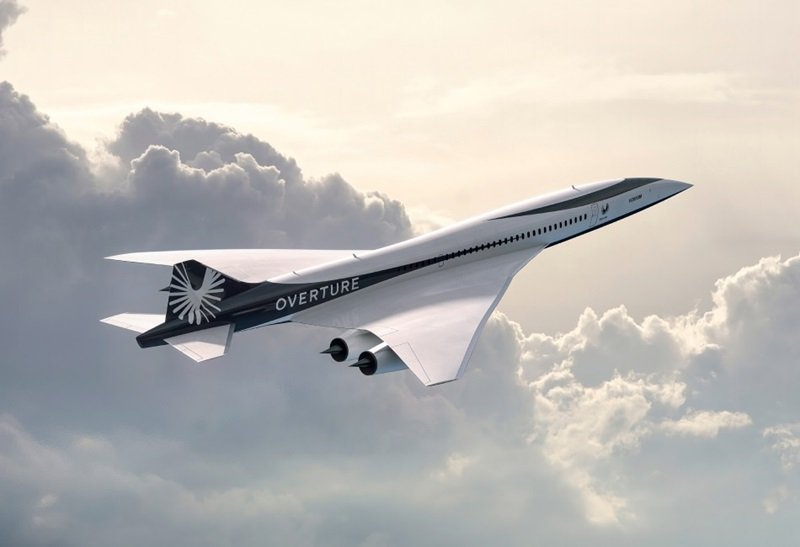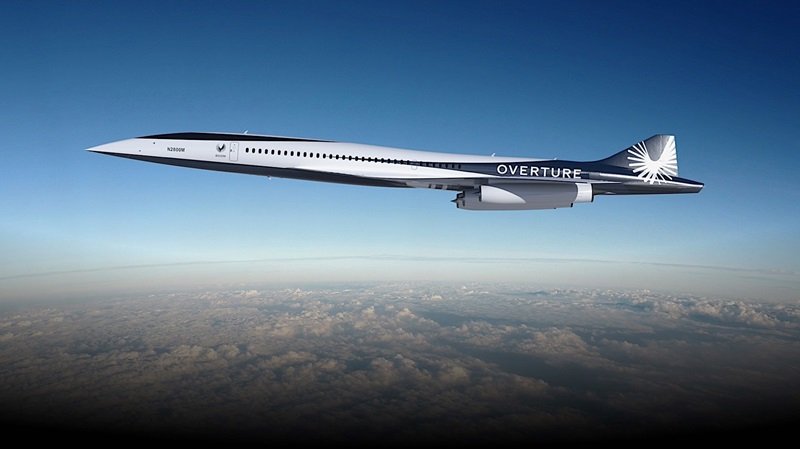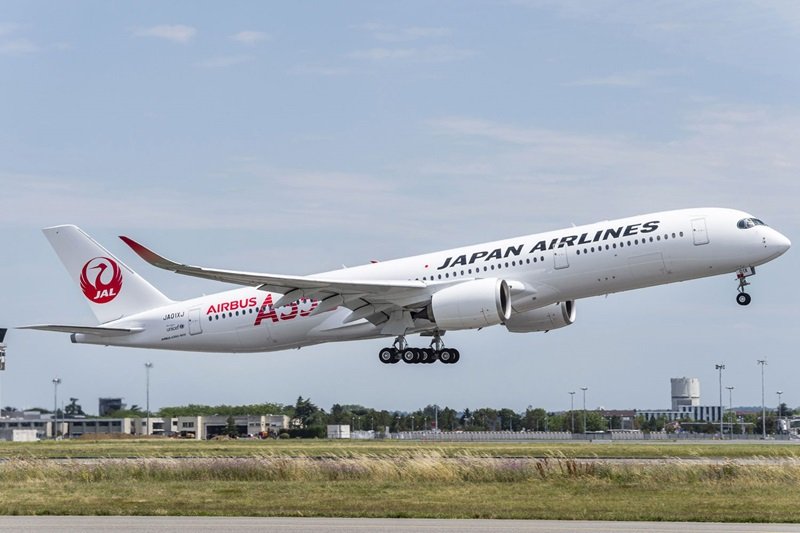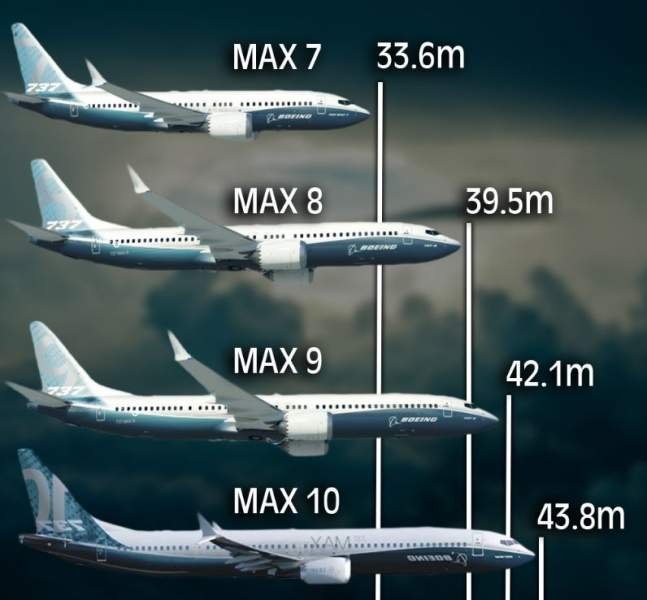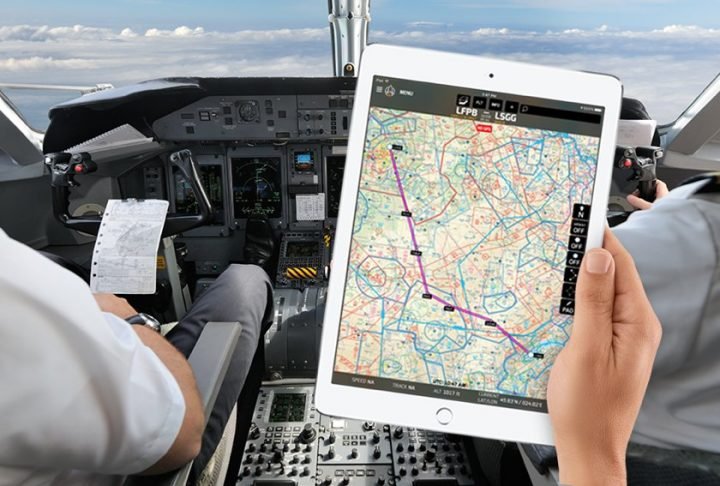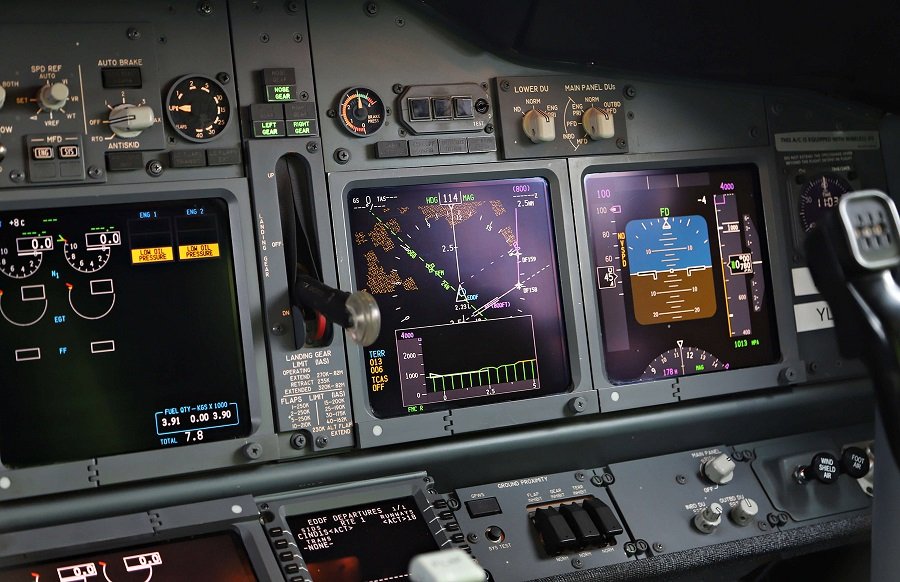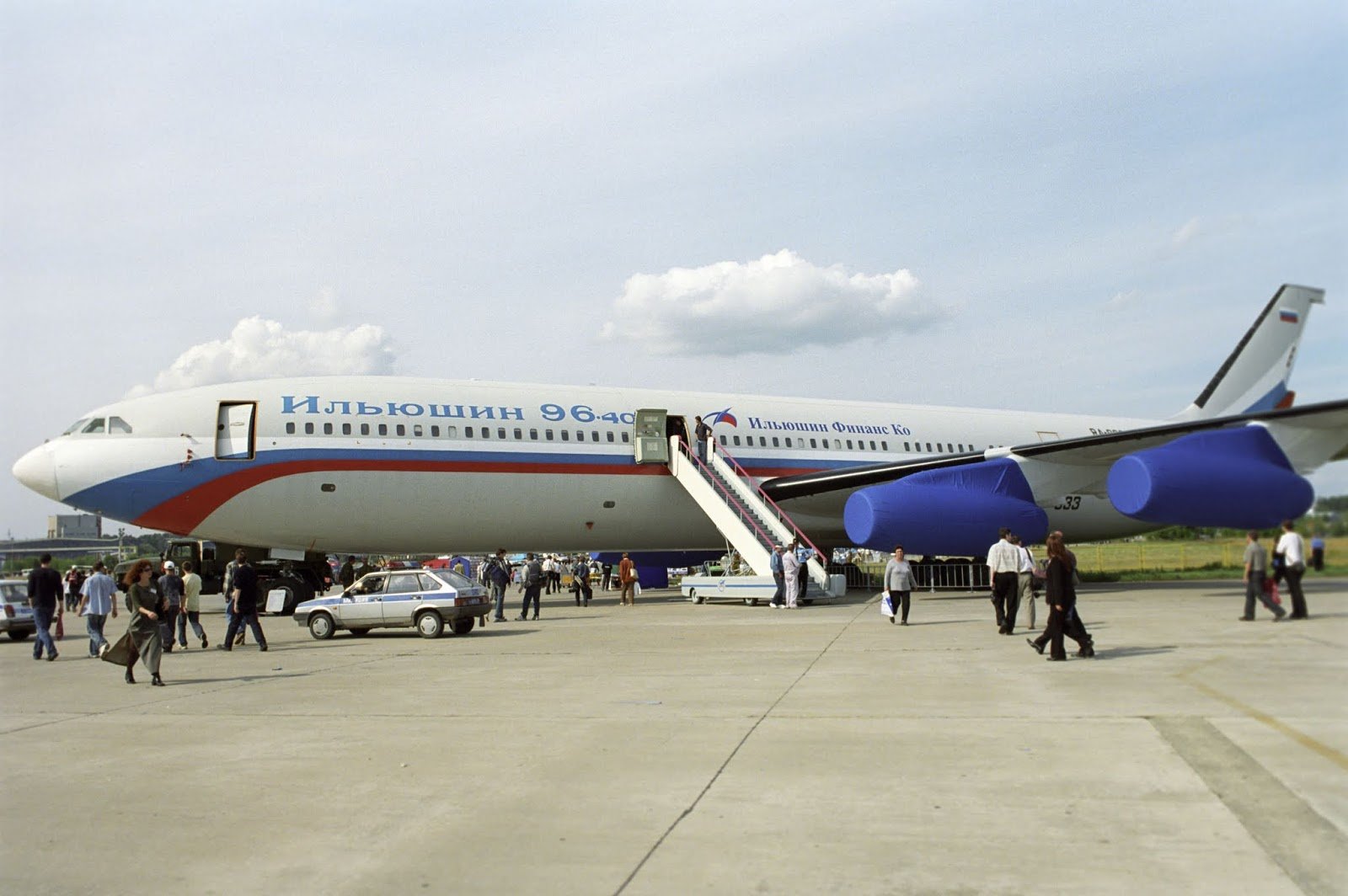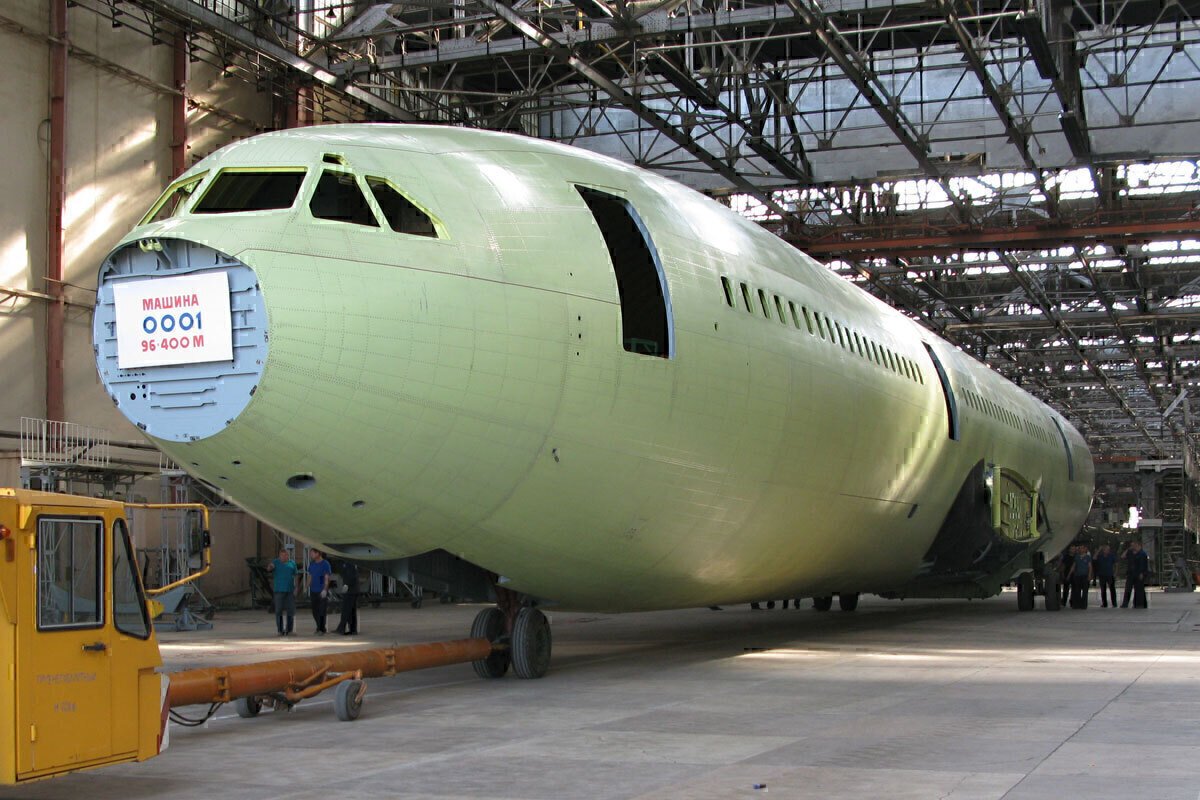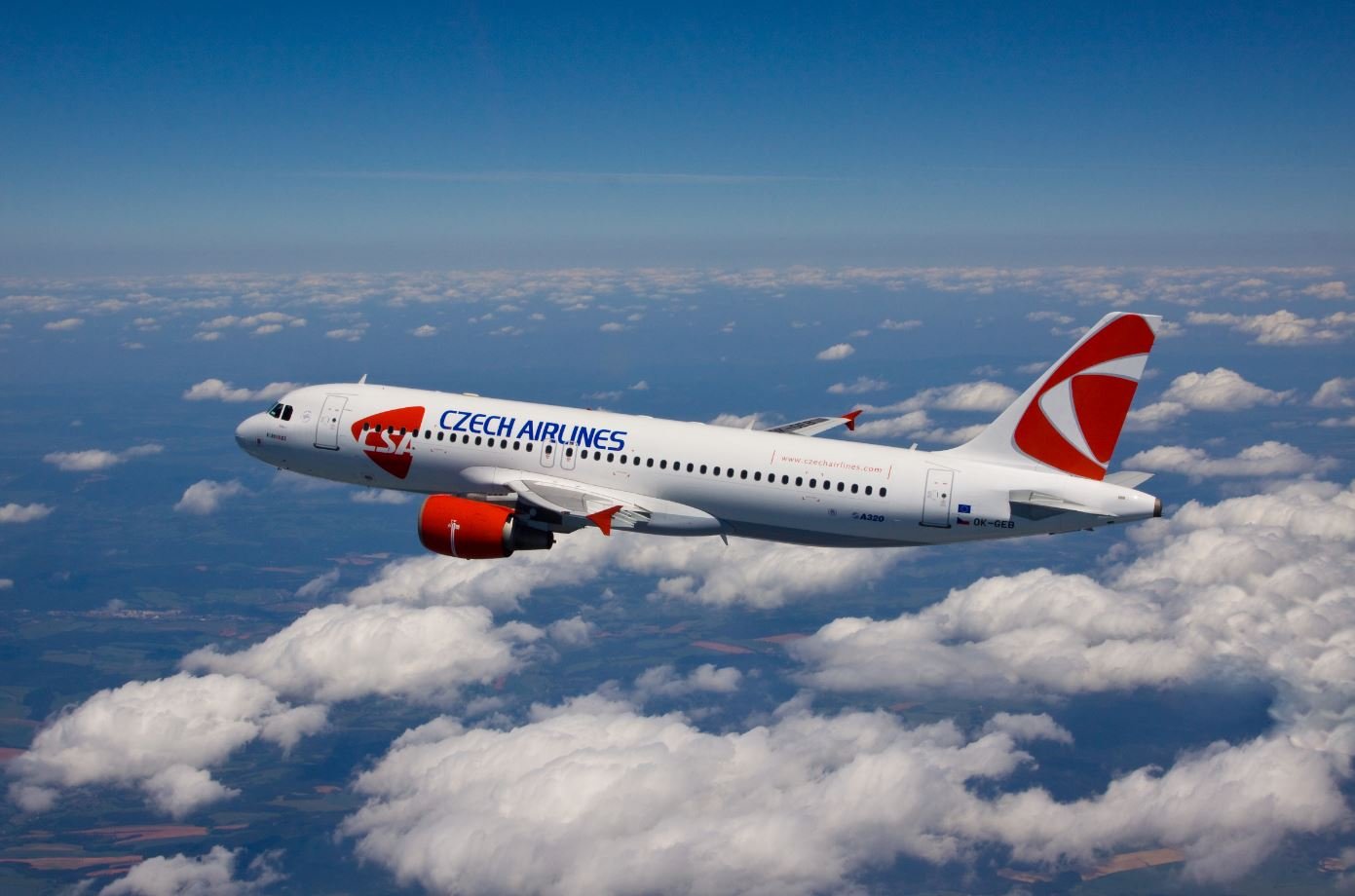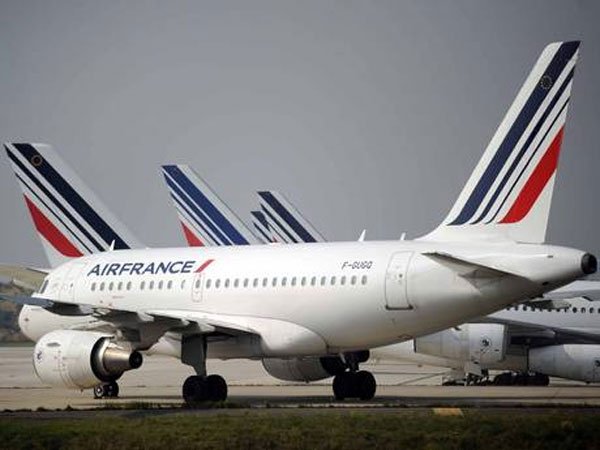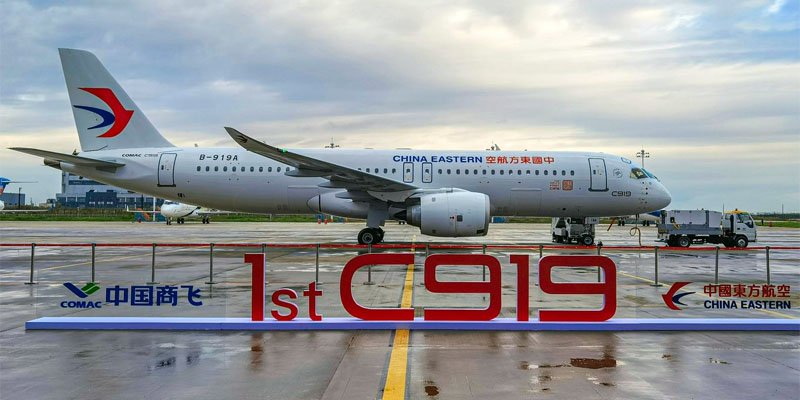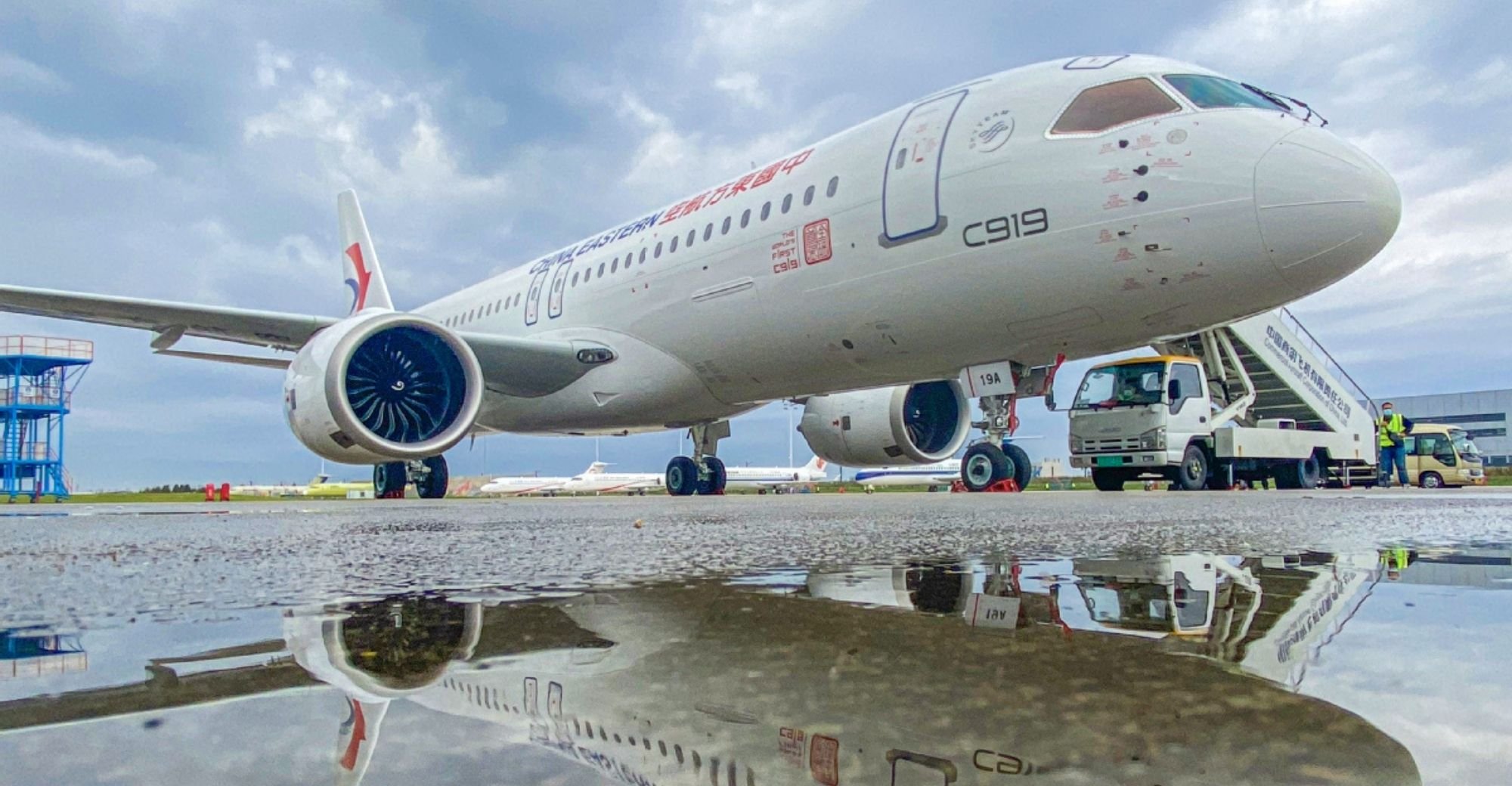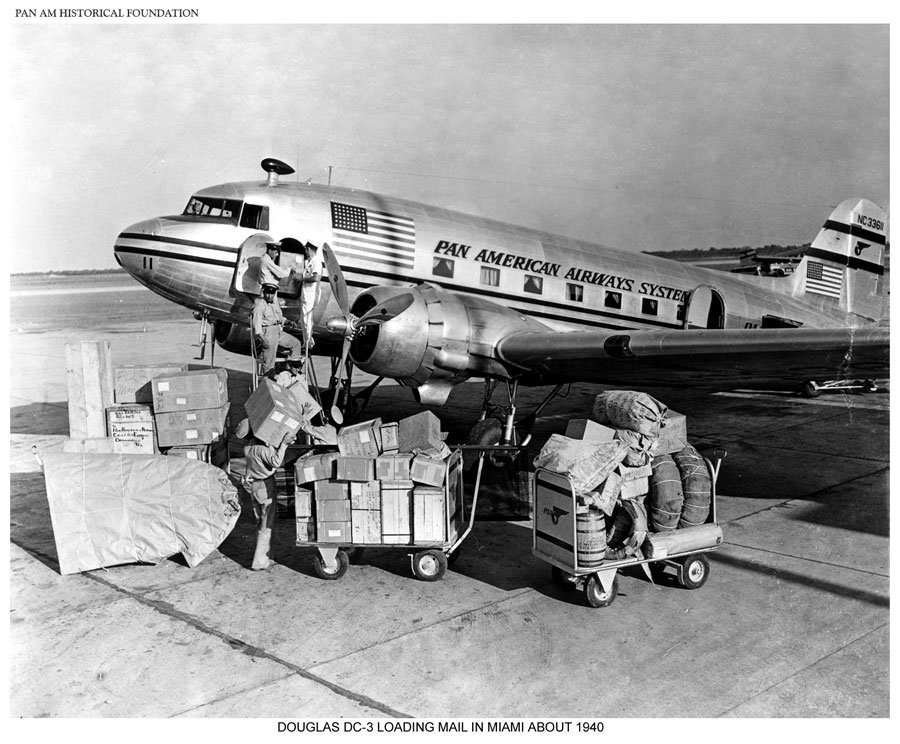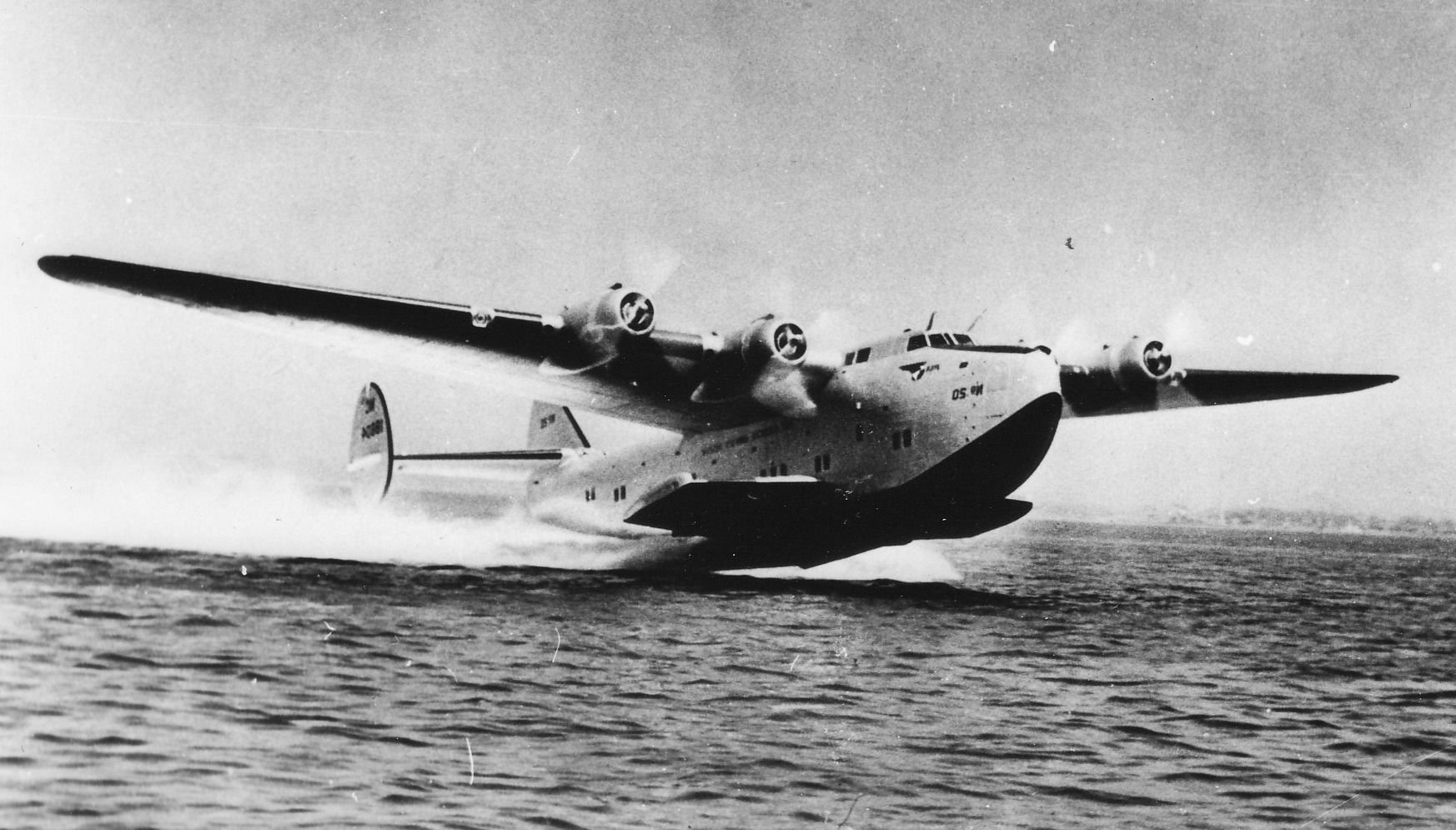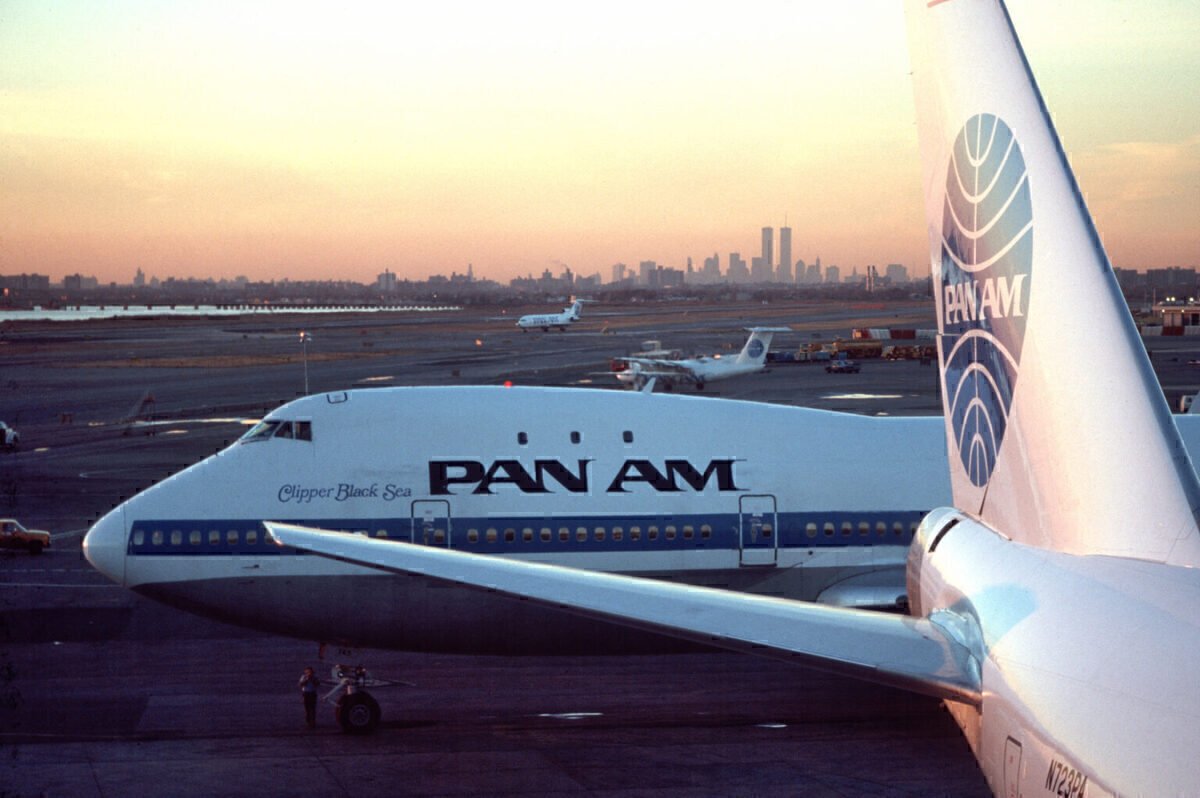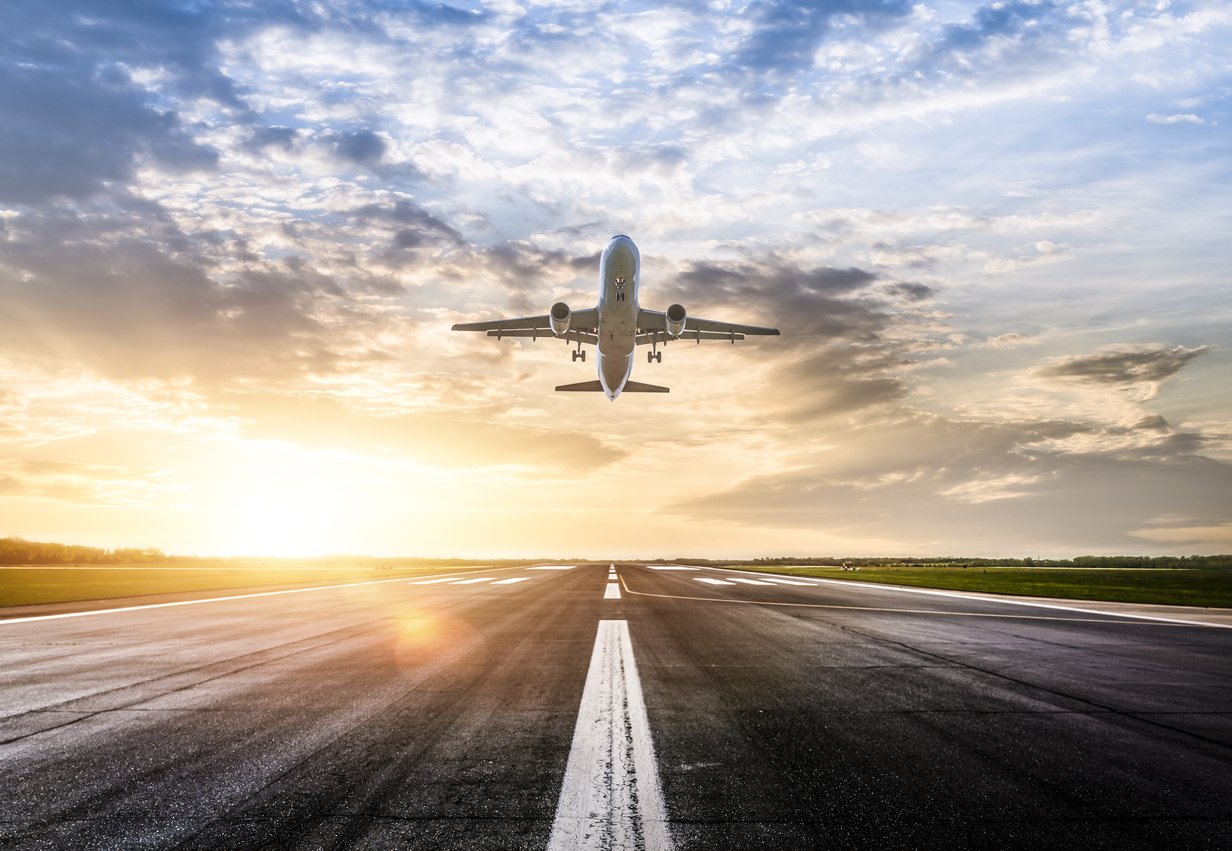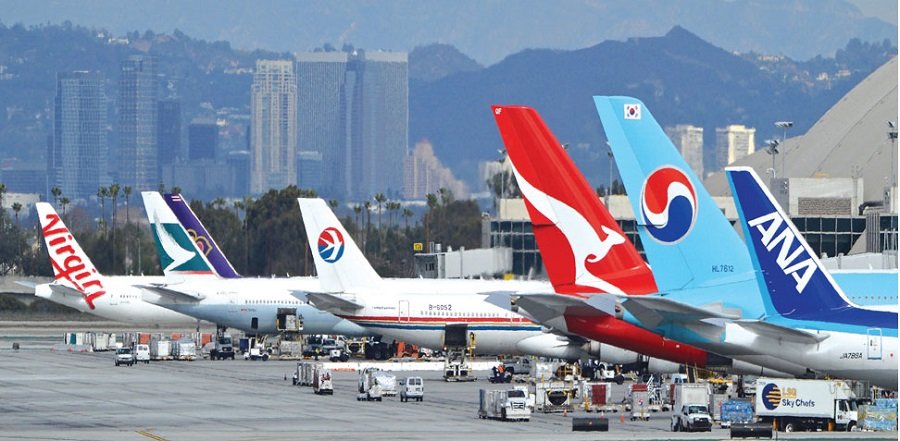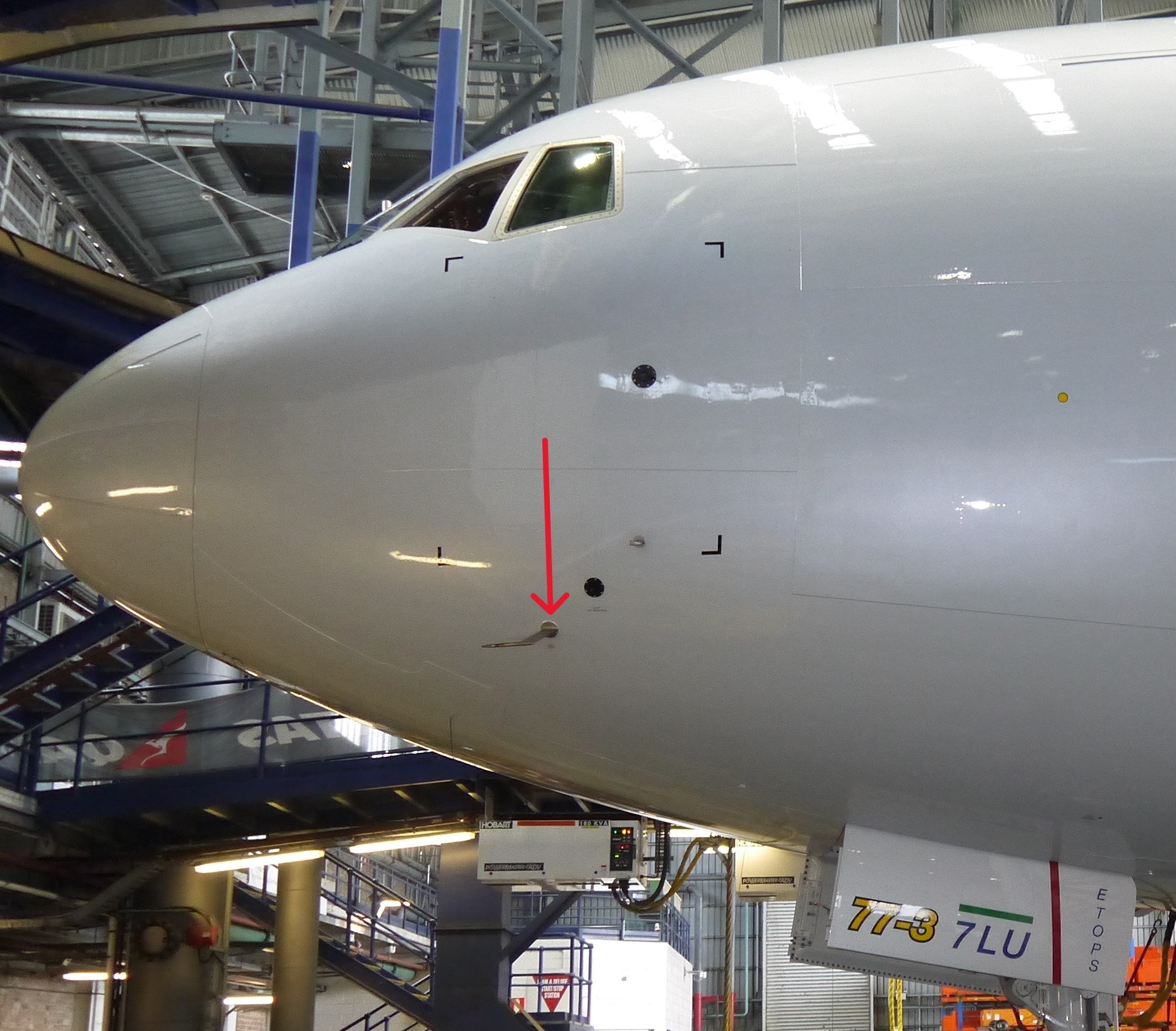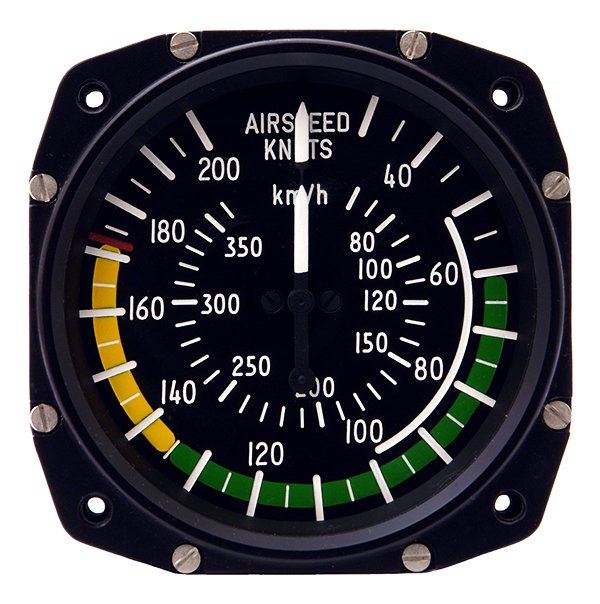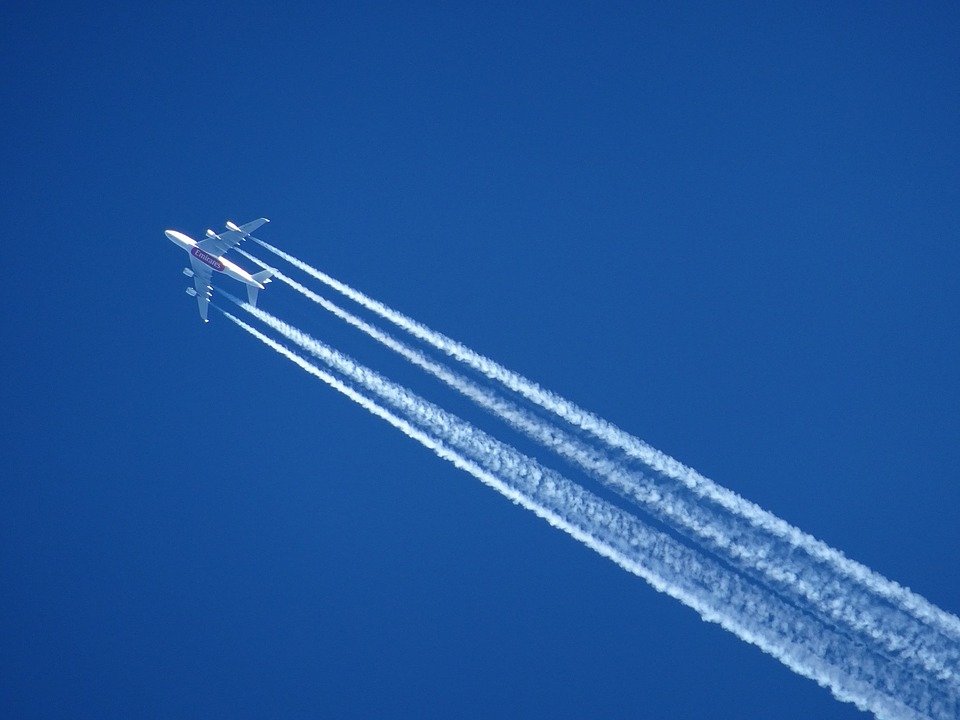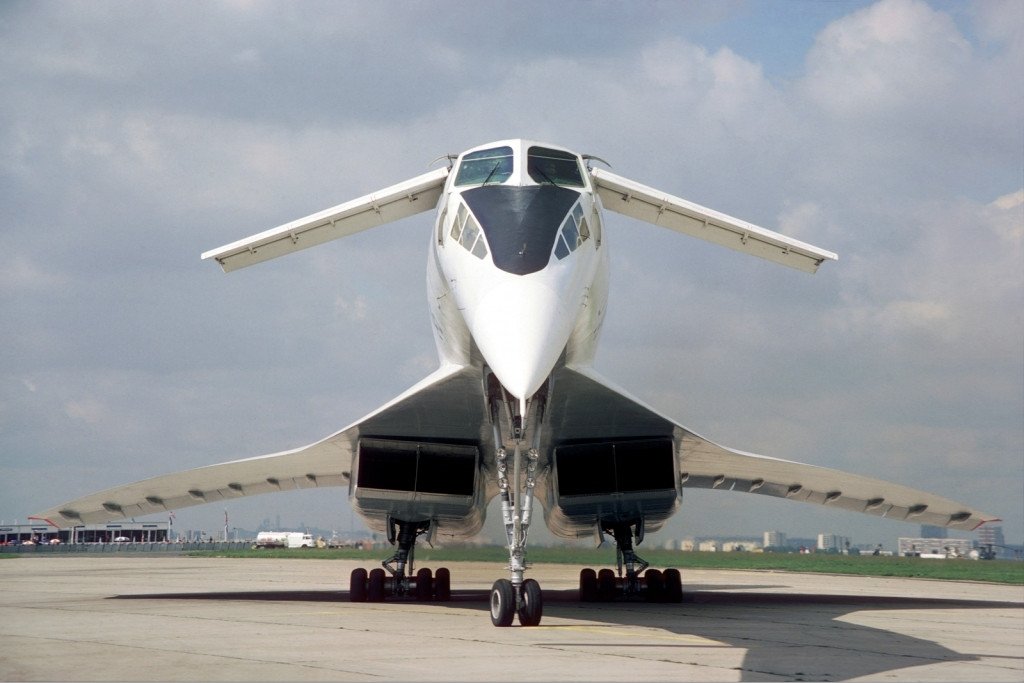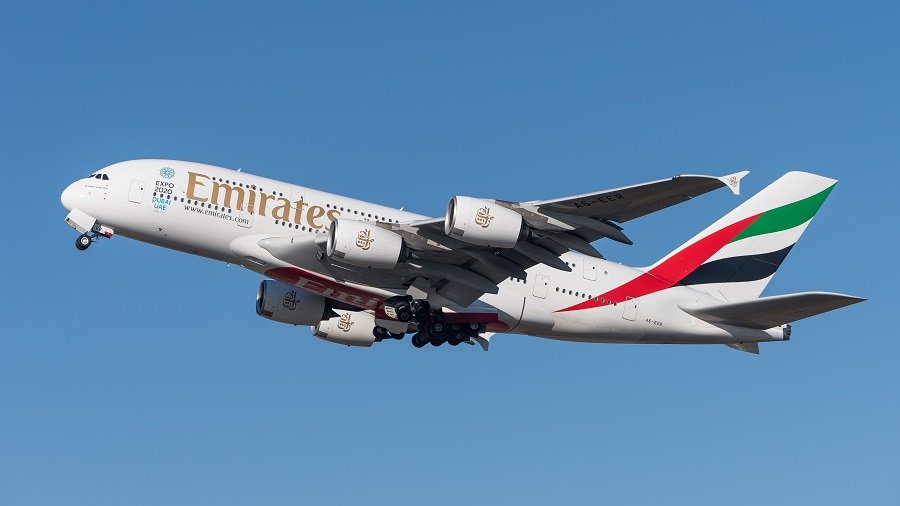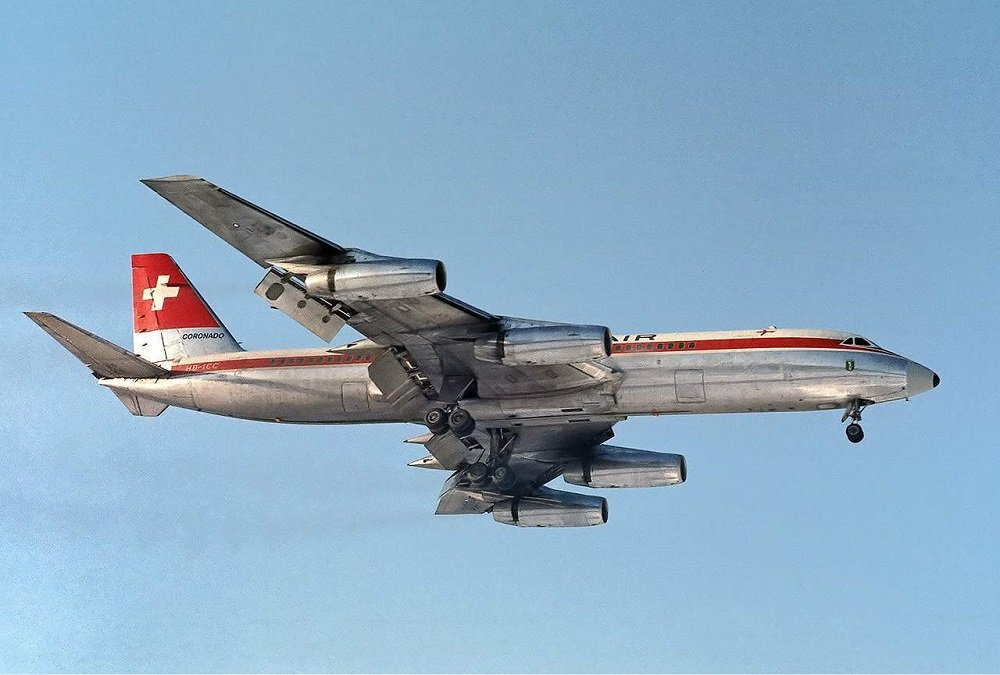Where is the Boom Supersonic solution up to?
The Heat Is On
At ATI’s Dallas facility, Boom Supersonic has begun metal forging for the first superalloy that will power the hottest sections of the Symphony engine.
Boom Supersonic: November 2024 Milestones and Progress.
Introduction
November has been a month of significant achievements for Boom Supersonic, as the company continues to make strides toward supersonic flight. With successful test flights, new collaborations, and innovative testing, Boom Supersonic is steadily advancing its mission to revolutionize air travel. Let's explore the key milestones and progress made in November.
Boom Overture on approach.
Wheels Up: Progress in the Hangar
The phrase "wheels up" has become increasingly common in the Boom Supersonic hangar. In November, the team completed two successful flights, launched new tests, and achieved several milestones toward supersonic flight. Testing requires time and patience, and Boom Supersonic appreciates the support and interest in XB-1's progress as they work methodically toward safe, supersonic flight.
Flight 8: XB-1’s “New” Underbelly
On November 16, XB-1 completed its eighth flight, confirming safe operation at Mach 0.8 with the stability augmentation system off. This flight expanded the altitude envelope to over 25,000 feet, continued tests of the Flutter Excitation System (FES), and reached a maximum speed of Mach 0.82 (487 knots true airspeed). A new series of tests was introduced in collaboration with the Defense Innovation Unit (DIU) and Air Force Operational Energy Office, testing the durability of a shark skin-inspired ‘riblet’ material by MicroTau, applied to XB-1’s aft underbelly to reduce drag, fuel consumption, and emissions.
Boom Overture flying through cloud.
Flight 7: Cleared for New Heights
Flight 7, completed on November 5, saw XB-1 officially cleared to fly at 30,000 feet—the altitude it will reach when flying supersonic. The team focused on flutter envelope expansion and cockpit pressure testing, ensuring safe performance and handling qualities at higher altitudes and supersonic speeds. XB-1 reached Mach 0.82 (499 knots true airspeed), performing several tests at higher speeds to ensure predictable handling up to transonic speeds.
Key Milestones Achieved
The flight test program for XB-1 has been systematic and rigorous, achieving several key milestones:
Flight 6: Flutter and handling quality tests at a higher altitude.
Flight 5: Landing gear retracted immediately following takeoff; flutter excitation system tests.
Flight 4: First use of the flutter excitation system; wind-up turn with elevated g-forces.
Flight 3: Maximum pitch and yaw attitudes expected in supersonic flight; environmental control systems tests.
Flight 2: Landing gear retracted and extended in-flight for the first time.
Flight 1: Initial assessment of XB-1’s handling qualities.
Next Up: The Transonic Regime
No aircraft flies at supersonic speeds without first flying at transonic speeds. During Flights 7 and 8, XB-1 began to operate within the transonic regime (Mach 0.82), bringing it closer to breaking the sound barrier. Flight 9 will see XB-1 going deeper into the transonic regime, a challenging speed range that causes structural vibrations known as the “transonic buffet.”
The Heat Is On
At ATI’s Dallas facility, Boom Supersonic has begun metal forging for the first superalloy that will power the hottest sections of the Symphony engine. This superalloy is being tested at long-duration high temperatures, simulating the conditions the engine will experience during supersonic cruise.
Conclusion
November has been a month of significant progress for Boom Supersonic, with successful test flights, new collaborations, and innovative testing. As the company continues to advance toward supersonic flight, the achievements of November mark important steps in the journey. With each milestone, Boom Supersonic moves closer to revolutionizing air travel and making supersonic flight a reality.
MH370: New Search and Unravelling Theories.
Explore the latest developments surrounding the mysterious disappearance of Malaysia Airlines Flight MH370. From a renewed search proposal to French journalist Florence de Changy’s groundbreaking revelations, this article dives into the enigma that continues to captivate the world. Discover theories, debris puzzles, and the enduring quest for answers.
Disclaimer: This website uses affiliate links, meaning: at no additional cost to you, we earn a small commission if you click-through and make a purchase. As an Amazon Associate I earn from qualifying purchases. We only feature products that we believe in and use ourselves. Your support means the world to us and allows us to host this website. Thank you!
Ten Years After the Disappearance
Introduction
Ten years ago today, Malaysia Airlines Flight MH370 vanished from radar screens, leaving behind a trail of mystery and heartache. The Boeing 777, carrying 227 passengers and 12 crew members, embarked on a routine journey from Kuala Lumpur to Beijing, only to disappear without a trace. As we commemorate this sombre anniversary, two significant developments have emerged, reigniting hope and curiosity.
1. The New Search
The Malaysian government has rekindled its interest in locating MH370. A US technology firm, Ocean Infinity, proposed a fresh search in the southern Indian Ocean, where the plane is believed to have crashed a decade ago. Their “no find, no fee” proposal has caught the attention of authorities, prompting Transport Minister Anthony Loke to consider resuming the search. If credible evidence emerges, a new contract with Ocean Infinity could be on the horizon. Families of the victims, still seeking closure, urge for a comprehensive search to prevent a similar tragedy in the future.
Map of initial search areas for MH370.
2. Florence de Changy’s Revelations
Enter French journalist Florence de Changy, whose tireless investigation has shed light on MH370’s enigma. As a seasoned reporter for Le Monde, she delved into the heart of the mystery, unearthing hidden truths and challenging official narratives. De Changy’s work has captivated the world, prompting us to question what really happened on that fateful night. Her findings, meticulously documented, offer fresh perspectives and fuel ongoing debates.
The Theories Unravelled
The Reunion Island Flaperon
On July 30, 2015, a significant piece of debris—a flaperon—was discovered on Reunion Island in the western Indian Ocean. This flaperon, part of the plane’s wing, became the first tangible evidence positively linked to MH370. Its identification was confirmed, marking a critical breakthrough. But what does it tell us?
De Changy’s perspective diverges from the official narrative. She questions whether the flaperon was genuinely from MH370 or if it was planted there. Could it be unrelated debris? Her scepticism stems from the lack of a comprehensive debris trail. If the plane crashed in the southern Indian Ocean, why haven’t more pieces surfaced? The flaperon, while significant, raises as many questions as it answers.
The African Coastline Discoveries
Over the years, more than 20 items of debris have washed up on coastlines across Africa, Madagascar, and La Reunion Island. These fragments—some confirmed to be from MH370—have been closely examined. Yet, the puzzle remains incomplete. De Changy’s research delves into the origin, trajectory, and implications of these scattered pieces.
One particular find off the coast of French Africa baffled researchers. Its significance lies not only in its existence but also in the questions it poses. How did it reach that specific location? What currents carried it there? And why haven’t we found more substantial sections of the aircraft? De Changy’s scrutiny extends beyond the debris itself—she seeks patterns, anomalies, and hidden connections.
Alleged flaperon from MH370 found on Reunion Island.
The Unresponsive Crew/Hypoxia Event
The official theory posits that the crew suffered an unknown “unresponsive crew/hypoxia event.” Hypoxia, oxygen deficiency, could have incapacitated them, leading to the plane’s erratic flight path. But questions persist: Why did it deviate from its course? And why the silence?
The Discrepancies
De Changy meticulously dissected the available data, cross-referencing flight logs, radar records, and eyewitness accounts. She discovered discrepancies that raised eyebrows. For instance, the timeline of MH370’s disappearance remains murky. Was it a sudden plunge into the ocean, or did the plane continue flying for hours? De Changy’s investigation suggests the latter—a prolonged flight path that defies conventional wisdom.
The Shadowy Radar Blip
One of the most intriguing pieces of evidence is a mysterious radar blip. Military radar in Malaysia detected an unidentified aircraft veering off course, seemingly following MH370. This “shadow plane” vanished from radar screens shortly after MH370’s transponder ceased transmitting. De Changy believes this blip holds crucial clues. Was it a military interception? A deliberate diversion? Or an innocent coincidence?
The Enigmatic Cargo: Mangosteens and Untraceable Motorola Electronics
French journalist Florence de Changy’s investigation into MH370 extends beyond the cockpit and flight path. She delved into the mysterious cargo carried by the ill-fated flight, unearthing perplexing details that defy conventional explanations.
Mangosteens Out of Season
Among the items listed on MH370’s manifest were 2.5 tonnes of poorly documented Motorola electronics equipment. However, it’s the inclusion of mangosteens that raises eyebrows. These exotic tropical fruits, native to Southeast Asia, are known for their sweet, juicy flesh and thick purple rinds. But why were they aboard a flight bound for Beijing? The timing is crucial—March 8, 2014, marked the end of the mangosteen season. Their presence hints at something clandestine as if the cargo held secrets beyond mere fruit.
The Enigma of Untraceable Electronics
The Motorola electronics, shrouded in mystery, lacked proper security screening. But what were they? And why were they so poorly documented? De Changy’s theory takes a daring leap: Was MH370 unwittingly transporting sensitive technology? Some speculate it could be part of a US drone used in Pakistan or military equipment captured by the Taliban. Yet, the absence of serial numbers adds to the intrigue. These electronics, seemingly untraceable, evoke questions about their purpose and origin. Were they part of a covert operation? Or did they harbor secrets that powerful entities wanted to keep hidden?
The Radar Readout: A Northward Anomaly
As MH370 crossed the skies on that fateful night, radar screens tracked its movements. However, one anomalous blip stands out: a radar readout indicating the aircraft north of Vietnam. This deviation from its expected flight path raises critical questions. Why did MH370 venture into this unexpected territory? Was it a deliberate diversion? Or did external forces manipulate its course? The radar data, meticulously analysed by experts, points to a calculated deviation—one that defies the official narrative. Could this northern trajectory hold the key to unravelling the mystery? Florence de Changy’s investigation compels us to scrutinize every blip, every deviation, and every hidden intention.
As we delve deeper into the enigma of MH370, these facets—cargo and radar anomalies—underscore the complexity of the tragedy. The missing souls, the untraceable electronics, and the radar blips remain etched in our collective consciousness, urging us to seek answers beyond the ordinary.
The Diego Garcia Connection
Diego Garcia, a remote US military base in the Indian Ocean, features prominently in de Changy’s research. Witnesses on nearby islands reported seeing a low-flying aircraft resembling MH370 on the night of its disappearance. The official investigation dismisses this sighting, but de Changy remains steadfast. Could Diego Garcia hold secrets about the missing plane? Was it a refuelling stop? Or a clandestine landing?
The Silence of the Satellite Data
Satellite data played a pivotal role in tracking MH370’s final moments. However, de Changy noticed gaps and inconsistencies. Why did the satellite company remain silent for days before releasing crucial information? Was there pressure to withhold data? And what about the “handshake” signals—did they reveal more than meets the eye? De Changy’s inquiries pierce through the silence, urging us to question official narratives.
The Human Element
De Changy interviewed families of passengers, air traffic controllers, and aviation experts. Their stories paint a mosaic of grief, frustration, and suspicion. Some believe MH370 was deliberately diverted, while others cling to hope that their loved ones may still be alive. De Changy’s empathy shines through as she amplifies their voices, reminding us that behind the headlines lie human lives forever altered.
Conclusion
As we reflect on a decade of uncertainty, MH370 remains aviation’s greatest enigma. The missing souls, their families, and the global community deserve answers. Whether through renewed searches, investigative journalism, or technological breakthroughs, the truth must prevail. Until then, we honour the memory of those lost and continue our quest for closure.
Disclaimer: The views expressed in this article are solely those of the author and do not represent official statements or conclusions.
Boeing’s 737 MAX: Unraveling the Design Flaws and Trust Erosion.
This article delves into the reasons behind Boeing’s repeated mistakes, focusing on the design and construction flaws that led to the 737 MAX crisis. Let’s explore the roots of this trust erosion and the lessons it holds for the aviation industry.
Introduction
In recent years, Boeing, once revered for its engineering prowess, has faced a series of crises that have severely impacted its reputation. The most glaring of these is the debacle surrounding the Boeing 737 MAX. This article delves into the reasons behind Boeing’s repeated mistakes, focusing on the design and construction flaws that led to the 737 MAX crisis. Let’s explore the roots of this trust erosion and the lessons it holds for the aviation industry.
1. The 737 MAX: A Troubled Journey
1.1 Background
The Boeing 737 MAX was intended to be an upgraded version of the highly successful 737 series, promising improved fuel efficiency and performance. However, a series of unfortunate events unfolded, leading to two fatal crashes—Lion Air Flight 610 in 2018 and Ethiopian Airlines Flight 302 in 2019—resulting in the loss of 346 lives.
1.2 Design Flaws
1.2.1 Maneuvering Characteristics Augmentation System (MCAS)
The MCAS, designed to prevent stalls, became the Achilles’ heel of the 737 MAX. It relied on a single angle-of-attack sensor, which proved disastrous when faulty data triggered repeated nose-down commands during critical flight phases. Boeing’s decision to rely on a single sensor without adequate redundancy was a grave mistake.
The Boeing 737-MAX was designed with the larger Leap 1B engine. Due to ground clearance issues, the larger engine had to be placed further forward and higher than previous 737 models.
1.2.2 Pressure to Compete
Boeing faced intense competition from Airbus, particularly with the A320neo series. To keep pace, Boeing rushed the 737 MAX development, leading to shortcuts and compromises. The pressure to deliver swiftly and inexpensively compromised safety and thorough testing.
2. Cultural Drift and Leadership Failures
2.1 Acquisition of McDonnell Douglas
In 1997, Boeing acquired McDonnell Douglas, a company with a different ethos. While Boeing historically prioritized engineering excellence, McDonnell Douglas focused on cost-cutting and incremental upgrades to existing models. This cultural clash seeped into Boeing’s DNA, impacting decision-making and safety.
2.2 Relocation of Headquarters
In 2001, then-CEO Philip Condit moved Boeing’s headquarters from Seattle to Chicago for tax incentives. This physical separation from engineering centers disrupted communication and alienated engineers. The shift from an engineering-centric culture to a business-oriented one had lasting consequences.
3. Regulatory Oversight and Transparency
3.1 FAA’s Role
The Federal Aviation Administration (FAA) plays a critical role in certifying aircraft. However, during the 737 MAX certification process, the FAA relied heavily on Boeing’s self-certification. The lack of independent oversight allowed design flaws to slip through the cracks.
3.2 Lack of Transparency
Boeing’s lack of transparency regarding the MCAS system and its software updates further eroded trust. The company failed to adequately inform pilots and airlines about critical changes, contributing to the tragic accidents.
4. Rebuilding Trust
4.1 Corrective Measures
Boeing must prioritize safety over competition. Strengthening engineering rigor, enhancing transparency, and fostering a culture of openness are essential steps. The 737 MAX’s recertification process must involve rigorous third-party assessments.
4.2 Restoring Reputation
Boeing needs visionary leadership committed to engineering excellence. Rebuilding trust requires acknowledging past mistakes, learning from them, and demonstrating unwavering commitment to safety.
The Boeing 737-9(MAX) is certified to carry 220 passengers. If the full capacity is configured, then the escape doors just behind the wings need to be operational. However, if the aircraft is configured to carry 189 or less passengers, then the door is bolted shut. Internally it cannot be seen as a normal wall panel covers it. On the exterior it can be seen as shown above.
The 737-9 Door Plug Problem
Recently, Boeing faced yet another quality issue related to the 737 MAX series. Preliminary inspections of Boeing 737-9 exit door plugs at United Airlines and Alaska Airlines revealed loose bolts and other potential installation problems. These findings could be linked to the in-flight separation of a similar type of panel from an Alaska aircraft on January 5, 20241. The door plug incident raised concerns about the quality control procedures followed by Boeing and its suppliers.
While this specific issue is not an immediate safety threat, it underscores the need for Boeing to address manufacturing flaws promptly. The company must ensure that all components, including door plugs, meet rigorous standards before delivery.
Conclusion
The Boeing 737 MAX saga serves as a stark reminder that engineering decisions have real-world consequences. By addressing cultural drift, improving transparency, and embracing rigorous safety practices, Boeing can regain its lost trust and ensure safer skies for all.
References:
George, B. (2024). Why Boeing’s Problems with the 737 MAX Began More Than 25 Years Ago. HBS Working Knowledge.
The Boeing 737 MAX: Lessons for Engineering Ethics. Springer
Boom Technology: Paving the Way for Supersonic Airliners.
Discover the future of air travel with Boom Supersonic’s Overture—a cutting-edge supersonic airliner poised to revolutionize the skies. From its powerful Symphony engines to sustainable fuel choices, explore the speed, comfort, and eco-conscious design of the Overture. Get ready to soar at Mach 1.7!” 🚀✈️
Introduction
In the ever-evolving world of aviation, Boom Technology has emerged as a trailblazer, aiming to revive the era of supersonic commercial flight. Let’s delve into the company’s history, its ambitious projects, and the exciting future it envisions.
The Birth of Boom
Founded in Denver, Colorado in 2014, Boom Technology set out to build what it calls the world’s fastest supersonic airliner. With the grounding of the Concorde nearly two decades ago, the dream of supersonic travel had faded. But Boom reignited that dream, fueled by innovation and a passion for pushing boundaries.
The latest design shows 4 Overture engines mounted beneath the main wings.
The Boom XB-1 Baby Boom
Before unveiling the full-scale Overture, Boom developed the XB-1 Baby Boom, a one-third-scale supersonic demonstrator. Here are the key details:
Design: The XB-1 maintains a cruising speed of Mach 2.2 and boasts over 1,000 nautical miles of range.
Engines: Powered by three General Electric J85-15 engines, each generating 4,300 pounds-force of thrust.
Rollout: The XB-1 was proudly rolled out in October 2020.
While initial flight testing was expected in 2022, delays pushed the first flight to 2024. The XB-1 serves as a crucial stepping stone toward the ultimate goal: the Boom Overture.
A Boom Overture shown in a landing phase. Note the main wheel bogies each with 6 wheels each.
The Boom Overture
The Overture represents Boom’s vision for a commercial supersonic transport. Here are the highlights:
Speed: The Overture aims for a cruising speed of Mach 1.7 (approximately 1,000 knots).
Passenger Capacity: With 65 to 88 seats, it caters to discerning travelers seeking swift, luxurious journeys.
Range: The Overture boasts an impressive 4,250 nautical miles of range, connecting distant cities with ease.
Market Potential: Boom estimates a demand for 1,000 supersonic airliners with business-class fares across 500 viable routes.
Delta Wings and Composite Materials
Taking inspiration from the iconic Concorde, Boom chose the delta wing configuration for the Overture. Additionally, the company leverages composite materials to enhance performance and fuel efficiency. These choices reflect Boom’s commitment to both speed and sustainability.
The Boom Symphony engine, designed for use on the Overture supersonic airliner, is a medium-bypass turbofan under development by Boom Technology.
Engine Configuration
The heart of any supersonic airliner lies in its engines, and the Overture is no exception. Here are the key details:
Four Powerful Engines: The Overture will be equipped with four wing-mounted engines. This configuration not only enhances performance but also contributes to noise reduction and operational efficiency for airlines.
Dual-Speed Capability:
Over Water: The Overture can cruise at Mach 1.7, making it one of the fastest commercial aircraft for transoceanic flights.
Over Land: When flying over land, it operates just below Mach 1, ensuring compliance with sonic boom regulations.
Engine Specifications:
Thrust: Each engine provides 35,000 lbs of thrust during takeoff.
Fuel Efficiency: The Overture’s engines are optimized for 100% Sustainable Aviation Fuel, aligning with the industry’s push toward eco-friendly alternatives.
Quiet Fan Design: The single-stage fan minimizes noise impact.
Advanced Materials: Additive manufacturing techniques reduce weight, part count, and assembly costs.
Certification: The engines meet FAA and EASA Part 33 requirements.
Funding and Milestones
Boom’s journey has been fueled by strategic investments and milestones:
Venture Funding: Boom secured investments from Y Combinator, Sam Altman, Seraph Group, and others.
Japan Airlines: In December 2017, Japan Airlines invested $10 million, enabling the completion of the XB-1 and early design work on the Overture.
NEOM Investment Fund: In November 2023, the NEOM Investment Fund joined the journey, further propelling Boom toward its supersonic goals.
The Road Ahead
As of January 2022, the Overture’s first flight is planned for 2026. Boom envisions a future where supersonic travel is not only faster but also more sustainable. The sleek Overture promises reduced travel times, connecting global cities with unprecedented speed and luxury. Buckle up; the future is about to break the sound barrier!
Unveiling the Japan Airlines Haneda Airport Crash: A Tale of Chaos, Miracle, and Aviation Safety.
In the wake of the plane crash on January 2 at Tokyo's Haneda Airport involving a Japan Airlines (JAL) Airbus A350 and a Coast Guard Bombardier DHC-8, a detailed investigation has brought to light the lack of safety measures that could have averted the catastrophe.
In the wake of the plane crash on January 2 at Tokyo's Haneda Airport involving a Japan Airlines (JAL) Airbus A350 and a Coast Guard Bombardier DHC-8, a detailed investigation has brought to light the lack of safety measures that could have averted the catastrophe. Despite the severity of the collision, all 379 passengers and crew on the JAL plane survived, marking it as a miraculous escape. This article delves into the specifics of the crash, the successful evacuation of the airliner, potential causes, and how aviation safety is shaped by data gleaned from such accidents.
Summary of the Crash:
The collision occurred on Haneda's Runway C, where the inbound JAL Airbus A350 collided with an outbound Coast Guard Bombardier DHC-8. Tragically, five of the six individuals on the Coast Guard plane lost their lives, while all occupants on the JAL flight survived. The immediate cause of the crash appears to be miscommunication between the Coast Guard pilot and the air traffic control tower.
A Japan Airlines Airbus A350-900. The A350 is part of the new generation of giant twin jets using composite materials in its construction. As well as the gain in the weight-to-strength ratio, these materials burn slowly which buys valuable time during an aircraft evacuation.
Specifics of How the Crash Occurred:
The misinterpretation of the "number 1" command, designating the Coast Guard aircraft as the first in standby, led to the pilot entering the runway without clearance. The lack of visual monitoring and the 40-second wait before the collision highlight critical flaws in the communication and monitoring systems.
Successful Evacuation of the Airliner:
Despite flames engulfing the aircraft and smoke filling the cabin, the evacuation of all 379 passengers and crew from the JAL plane was hailed as a miracle. The well-trained cabin crew played a crucial role in maintaining order and ensuring a smooth evacuation. Passengers adhered to instructions, leaving personal items behind, showcasing cultural qualities that prioritize order and cooperation.
Examining Possible Causes of the Accident:
The investigation revealed several factors contributing to the accident, including bad phraseology, inoperable airport lights, and the absence of visual monitoring on the runway. The revelation about out-of-service stop bar lights since April raises concerns about preventive measures for runway incursions. Cost-cutting measures, such as the decision not to hire additional staff for runway monitoring, have come under scrutiny.
A Japan Coast Guard Bombardier Dash 8-300 similar to that which was lost in the 02 January 2024 accident at Haneda. Ironically, the Dash 8 was mobilized to assist with relief for earthquake victims. One tragedy leading to another.
Aviation Safety and Data from Accidents:
Accidents like the Haneda crash serve as critical learning experiences for the aviation industry. Post-accident investigations lead to substantial improvements in aircraft design, flight procedures, and safety regulations. Examples include FAA rules combating pilot fatigue, automation of key aircraft functions, and advancements in materials like carbon composites. The industry continuously refines safety measures based on the data obtained from accidents, ensuring a proactive approach to preventing future occurrences.
Conclusion:
The Japan Airlines Haneda Airport crash stands as a stark reminder of the intricate balance required in aviation safety. The survival of all occupants on the JAL plane, despite the severity of the collision, showcases the effectiveness of well-trained crews and cooperative passengers. However, the investigation into the incident reveals systemic issues that demand immediate attention to prevent similar accidents in the future.
In the relentless pursuit of safer skies, the aviation industry must address the root causes, whether they be in communication protocols, infrastructure maintenance, or staffing levels. The industry's commitment to learning from accidents, as evidenced by the continuous refinement of safety measures, underscores its dedication to passenger well-being. As technology advances and data-driven insights shape the future of aviation, the hope is that each incident brings us closer to a world where air travel is not only a marvel of engineering but also a paragon of safety.
Further reading: WSWS, Kyodo News, National Seniors, NY Post.
What are your thoughts? Comment below.
Alaska Airlines Boeing 737-9 Max Decompression Incident: Ongoing Investigation and Industry Ramifications
Explore the latest developments in the Alaska Airlines Boeing 737-9 Max decompression incident, unraveling the ongoing FAA investigation and Boeing's response. Delve into the repercussions on Boeing's reputation and the potential industry-wide ramifications of grounded aircraft. As passengers seek legal recourse, and with the FAA considering a shift in certification responsibilities, the aviation landscape faces crucial questions about safety, oversight, and the future of Boeing's crucial role in commercial aviation.
Introduction:
The fallout from the Boeing 737-9 Max decompression incident during Alaska Airlines Flight 1282 continues to reverberate through the aviation industry. In a follow-up to our earlier coverage, this article delves into the ongoing investigation, Boeing's response, the implications for its reputation, and the potential outcomes in terms of groundings.
The Incident Recap:
To recap, the incident involved a rapid decompression during Alaska Airlines Flight 1282, prompting the grounding of all Boeing 737-9 Max aircraft equipped with a "door plug." The Federal Aviation Administration (FAA) launched a formal investigation, citing concerns about Boeing's adherence to approved designs and safety regulations.
Boeing 737-9 MAX in Boeing colours.
Ongoing FAA Investigation:
The FAA's intensified oversight of Boeing, including a new audit of the 737 MAX 9 production line, indicates a growing unease with the recent manufacturing issues. Mike Whitaker, the FAA chief, pointed to "other manufacturing problems" at Boeing, emphasizing the need for a thorough examination of the manufacturing process. The FAA is considering the unusual step of potentially shifting some certification responsibilities from Boeing to an independent entity.
Boeing's Response and Reputation Management:
Boeing's CEO, David Calhoun, acknowledged the existence of faults in the 737-9 Max, terming them as "quality escapes." The term, while peculiar, underscores Boeing's commitment to addressing these issues seriously. The company pledged full cooperation with the FAA and expressed regret for the impact on customers and passengers.
However, this incident adds to a string of quality assurance issues involving Boeing 737-MAX aircraft, raising concerns among industry analysts and aviation experts. The acknowledgment of a "quality" issue by Calhoun emphasizes the need for a comprehensive review of Boeing's manufacturing processes.
Impacts on Airlines and Passengers:
Alaska Airlines and United Airlines, the two major operators of the Boeing 737-9 Max, faced significant disruptions, with multiple flight cancellations due to grounded aircraft. Both airlines discovered additional loose bolts on the "door plugs" during inspections, leading to extended cancellations.
Passengers affected by the incident have filed a class-action lawsuit against Boeing, citing physical injuries and emotional trauma. Alaska Airlines offered compensation to passengers, but the litigation underscores the potential legal challenges Boeing may face.
Outlook for Boeing and Industry Groundings:
As Boeing grapples with ongoing investigations and legal proceedings, the aviation industry is closely watching the potential outcomes. The FAA's commitment to a meticulous examination of the incident and Boeing's manufacturing practices suggests a cautious approach. The proposed shift in certification responsibilities raises questions about the long-standing practices between regulatory bodies and manufacturers.
The challenge for Boeing, being a pivotal player in the duopoly alongside Airbus, underscores the importance of swift resolution to systemic issues. Despite the setbacks, Boeing remains a critical supplier of commercial aircraft, making the industry's focus on safety paramount.
Conclusion:
The Boeing 737-9 Max decompression incident continues to unfold, with the FAA's rigorous investigation and Boeing's commitment to addressing the issues at the forefront. As the industry awaits the findings and potential changes in certification processes, the incident serves as a stark reminder of the critical balance between manufacturing efficiency and aviation safety.
Acknowledgements:
Unraveling the Alaska Airlines Boeing 737-9 Depressurization Incident: A Comprehensive Timeline
Unraveling the Alaska Airlines Boeing 737-9 Depressurization Incident: A Comprehensive Timeline. The recent incident involving a missing door plug on an Alaska Airlines Boeing 737-9 has raised concerns about the safety of the aircraft model. This article delves into the timeline of events, investigations, industry responses, and provides insights into the purpose of the door plug and its significance. The incident, which occurred on 05 January 2024, sent shockwaves through the aviation industry. Passengers and crew members onboard the flight experienced a sudden depressurization, leading to a chaotic and potentially dangerous situation.
Introduction:
The recent incident involving a missing door plug on an Alaska Airlines Boeing 737-9 has sparked concerns and raised questions about the safety of the aircraft model. This article delves into the timeline of events, investigations, industry responses, and provides insights into the purpose of the door plug and its significance.
The incident, which occurred on 05 January 2024, sent shockwaves through the aviation industry. Passengers and crew members onboard the flight experienced a sudden depressurization, leading to a chaotic and potentially dangerous situation. The missing door plug was identified as the cause of the incident, prompting immediate investigations by both Alaska Airlines and the Federal Aviation Administration (FAA).
In the following sections, we will explore the timeline of events leading up to the incident, the investigations conducted by Alaska Airlines and the FAA, the industry's response, and the measures taken to prevent future occurrences.
The Troubled History of the Boeing 737 Max:
The Boeing 737 Max has had a tumultuous past, marred by safety concerns and tragic accidents. The series of events began with the crashes of Lion Air Flight 610 in 2018 and Ethiopian Airlines Flight 302 in 2019, both involving the Boeing 737 Max 8, the predecessor to the 737-9. These incidents shed light on significant issues with the angle of attack (AOA) sensor, a critical component of the aircraft's flight control system.
Investigations into the crashes revealed that faulty AOA sensors provided incorrect data to the aircraft's automated systems, causing the planes to enter a dangerous flight mode known as MCAS (Maneuvering Characteristics Augmentation System) activation. This led to a loss of control and ultimately resulted in the tragic accidents.
In response to these incidents, aviation authorities around the world, including the Federal Aviation Administration (FAA), grounded the entire Boeing 737 Max fleet for an unprecedented period of over 600 days. This grounding was necessary to address the safety concerns and ensure that appropriate modifications and enhancements were made to the aircraft's systems.
The Boeing 737 MAX family of airliners. The MAX 8 was the first release with the MAX 9, the aircraft in this incident following later. The MAX 8 and MAX 10 have yet to be released.
The Alaska Airlines Flight 1282 Incident:
On January 5, 2024, Alaska Airlines Flight 1282, a Boeing 737 Max 9, departed from Portland International Airport with its destination set for Ontario, California. However, shortly after takeoff, a door plug on the fuselage became dislodged, resulting in a sudden depressurization of the cabin. As a result, the flight crew made the decision to perform an emergency landing back in Portland.
Despite the alarming situation, the swift actions of the flight crew ensured the safety of all 171 passengers and six crew members on board. Thankfully, there were no major injuries reported as a result of the incident.
The occurrence of a fuselage blowout and subsequent cabin depressurization is a serious matter that requires thorough investigation. The National Transportation Safety Board (NTSB) and other relevant authorities will conduct a detailed air safety investigation to determine the root cause of the incident. This investigation will likely focus on factors such as aircraft maintenance issues, door plug failure, and any other contributing factors that may have led to the depressurization event.
From the cockpit. These are the communications with the tower.
Alaska Airlines pilot: “Seattle Alaska 1282, we just depressurized, we’re declaring an emergency. We need to descend down to 10,000. We just need to depressurize...and we need to return back to Portland.”
Alaska Airlines pilot: “Hey Portland approach Alaska 1282 emergency aircraft we’re now leveling 12,000 and left turn heading 340.”
Air traffic controller: “1282 foreign approach. Good afternoon. You still have information zero?”
Alaska Airlines pilot: “Yeah, we do have information zero, we’d like to get lower, if possible.”
Air traffic controller: “Possibility 1282 descend and maintain 7,000.”
Air traffic controller: “Alaska 1282 did you declare an emergency or did you need to return to …”
Alaska Airlines pilot: “Yes, we are in an emergency, we are depressurized, we do need to return back to, we have 177 passengers. Fuel is 18-eight.”
Alaska Airlines pilot: “Our fuel is 18,900 pounds and we have 177 passengers on board.”
Air traffic controller: “Alaska 1282 roger. And do you need time to burn off some fuel before you land?”
Alaska Airlines pilot: “Negative.”
Air traffic controller: “Alaska 1282 so you’re ready for the approach now? Runway 28 left OK?”
Alaska Airlines pilot: “We need about ten minutes. Alaska 1282.”
Air traffic controller: “Roger, just let me know when you’re ready.”
Alaska Airlines pilot: “We’ll let you know. Alaska 1282.”
Air traffic controller: “Coming in a little bit, uh, unreadable, very quiet. The only information we have is a pressurization issue and 177 passengers and 18,900 pounds of fuel, and as of right now, we do not know the intentions of the aircraft.”
Air traffic controller: “The emergency aircraft will be the next arrival, they are on a two-mile final you can expect access to the runway.”
Unfolding Events:
Following the emergency landing on Friday, January 5, the National Transportation Safety Board (NTSB) promptly initiated an investigation into the Alaska Airlines Boeing 737-9 depressurization incident. The NTSB's investigation aims to determine the root cause of the incident and identify any contributing factors.
On Saturday, January 6, in response to the incident, Alaska Airlines made the decision to temporarily ground its entire fleet of 65 Boeing 737-9 aircraft for inspections. These inspections were conducted to ensure the safety and airworthiness of the aircraft. Fortunately, the initial inspections revealed no concerning findings, allowing Alaska Airlines to resume service with its Boeing 737-9 fleet.
In conjunction with Alaska Airlines' actions, the Federal Aviation Administration (FAA) issued an emergency airworthiness directive on the same day. This directive grounded certain Boeing 737 MAX 9 aircraft worldwide for specific inspections. The FAA's directive aimed to ensure the safety of these aircraft and prevent any potential similar incidents.
On Monday, January 8, United Airlines conducted inspections on its fleet of Boeing 737 MAX 9 aircraft. During these inspections, loose bolts were discovered on multiple aircraft, raising concerns about the production process. This finding further emphasizes the importance of thorough inspections and maintenance to ensure the safety of passengers.
Industry Response and Impact:
The Alaska Airlines Boeing 737-9 depressurization incident had significant repercussions on the aviation industry. One of the immediate impacts was the widespread cancellations and groundings of flights. Nearly 700 flights were canceled nationwide, affecting major airlines such as Alaska Airlines, United, Turkish Airlines, Copa Airlines, and Aeroméxico. This disruption caused inconvenience for passengers and highlighted the need for swift action to address safety concerns.
The incident also had a notable effect on Boeing's stock value. On Monday, January 8, Boeing shares experienced a significant drop of 9% as a result of the ongoing investigations and safety concerns surrounding the Boeing 737-9 aircraft. This decline in stock value reflects the impact of the incident on investor confidence in the company.
One of the challenges faced during the investigation was related to the cockpit voice recorder. The overwritten data on the recorder complicated the investigation process, emphasizing the need for extended recording times.
The Door Plug and its Significance:
The purpose of the Door Plug on Boeing 737 aircraft is to meet federal requirements for emergency exits. Some Boeing 737s, including the Max 9 variant, have emergency exits on the fuselage behind the wings. However, larger variants with more seats require additional exits. To accommodate this, Alaska Airlines and United Airlines configure their 737 Max 9s with fewer than 180 seats, eliminating the mid-cabin exits and replacing them with a permanent plug that is the size of an exit door.
This is an image of the regular over wing emergency exit on the Boeing 737 MAX. With the Boeing 737 MAX 9, which is the current largest version of the type, there is an additional emergency exit behind the main wings on each side of the cabin. For airlines that order the higher density seating version of the 737-9 this emergency must be operable. Airlines that opt for a lower seating density, such as Alaska Airlines, the exit is not required. In this case the exit is hidden from the cabin interior by a wall panel. A plug, or non opening door is fitted to the outer shell of the aircraft to cover the door opening.
Ongoing Investigations and Safety Measures:
The Alaska Airlines Boeing 737-9 depressurization incident has prompted ongoing investigations and the implementation of safety measures to prevent similar incidents in the future. The National Transportation Safety Board (NTSB) has been actively involved in the investigation, and their findings have shed light on the significance of examining all components and witness marks for a thorough investigation.
One key finding by the NTSB is the location of the missing door plug. This discovery emphasizes the importance of meticulously examining all components of an aircraft during investigations. By thoroughly inspecting witness marks and other evidence, investigators can gain valuable insights into the sequence of events that led to the incident.
In response to the incident, Boeing has issued instructions for enhanced inspections of the door plug on their Boeing 737 aircraft. These instructions are currently awaiting approval from the Federal Aviation Administration (FAA). Additionally, Alaska Airlines and United Airlines, who also operate the Boeing 737-9, are seeking clearance to begin inspections on their respective fleets.
Renewed Safety Concerns:
The Alaska Airlines Boeing 737-9 depressurization incident has prompted a renewed focus on the overall safety of Boeing's Max aircraft. This incident has reignited discussions about past issues and the need for continuous improvements in aviation safety protocols.
The incident serves as a reminder that despite advancements in technology and safety measures, there is always room for improvement. It highlights the importance of thorough inspections, maintenance practices, and ongoing monitoring of aircraft components to ensure the highest standards of passenger safety.
Conclusion:
The Alaska Airlines Boeing 737-9 depressurization incident has brought to light significant challenges for the aviation industry in ensuring the safety of the 737 Max series. As the investigation into this incident continues, it is crucial for the industry to take proactive measures to address any potential issues and enhance air safety.
Ongoing inspections and thorough maintenance practices will play a vital role in identifying and rectifying any potential vulnerabilities in the aircraft's systems. The incident has prompted regulatory bodies, such as the Federal Aviation Administration (FAA), to closely examine the safety protocols and procedures surrounding the 737 Max series.
Lessons learned from this incident will undoubtedly shape the future of Boeing's flagship aircraft. The NTSB findings from the investigation will provide valuable insights into the root causes of the depressurization incident and guide the implementation of necessary changes to prevent similar incidents in the future.
The Boeing 777X: Navigating Certification, Orders, and Unprecedented Innovation.
Discover the groundbreaking features and unprecedented innovation of the Boeing 777X in our latest article. As the world's largest twin-engine airliner, the 777X is on the cusp of achieving type inspection authorization (TIA) and U.S. FAA approval.
Boeing 777X Introduction:
The Boeing 777X, poised to be the world's largest twin-engine airliner, is on the verge of a significant milestone—type inspection authorization (TIA). As Boeing aims for U.S. FAA approval in 2025, the 777X program has encountered delays and challenges but is making strides toward redefining long-haul travel with groundbreaking features and unparalleled efficiency.
Certification Progress at the Dubai Airshow:
Boeing's commitment to achieving TIA for the 777X was evident as flight test vehicle WH001, a 777-9, graced the Dubai Airshow. John Dyson, Boeing's senior product and services marketing specialist, highlighted the significance of TIA in formal FAA participation for certification credit. With 3,000 hours and 1,000 cycles already logged in the test program, Boeing anticipates a sprint through the remaining flight tests post-TIA, eyeing a 2025 entry into service.
A Boeing 777-8 at Montreal. The 777-8 is the smaller of the two 777-X variants.
Innovations and Design Features:
Launched in 2013, the 777X boasts cutting-edge technologies and design elements. The new GE9X engines, producing a record 134,300 pounds of thrust, promise a 10 percent improvement in specific fuel consumption over its predecessor. The composite wings, featuring folding wingtips inspired by Boeing's F-18, ensure the 777X's adaptability at over 200 airports globally. Additional enhancements include a lower cabin altitude, expanded cabin width for 10-abreast seating, and advancements borrowed from the Boeing 787.
Airlines Embrace the Future:
Despite initial setbacks, the 777X has garnered significant interest from airlines worldwide. Emirates leads the pack with a substantial order of 205 aircraft, showcasing confidence in the program's potential. Other prominent customers include Qatar Airways, Singapore Airlines, Lufthansa, and Etihad Airways. The aircraft's versatility and efficiency make it an attractive option for carriers looking to redefine their long-haul operations.
Boeing 777-9 with folding wing tip.
A Boeing 777-9 showing off the folding wingtip which enables the greater wingspan in flight while still fitting into current airport gates.
Inside the Boeing 777X Test Aircraft:
Boeing's commitment to safety and reliability is evident in its extensive test program. The 777X testbed, Flight Test 1, has accumulated over 1,300 hours of flight time across 540 flights. The revolutionary folding wingtips, a first in the industry, ensure operational efficiency without requiring new infrastructure. Rigorous testing, including environmental, performance, and range evaluations, contributes to the aircraft's certification process.
Looking Ahead:
Boeing remains steadfast in its commitment to the 777X program despite challenges stemming from the 737 MAX incidents, the global pandemic, and supply chain disruptions. With over 350 orders, the 777X is poised to reshape long-haul aviation, offering airlines a game-changing blend of capacity and range. As Boeing plans proving routes with Emirates in the coming year, the aviation industry eagerly awaits the arrival of the Boeing 777X, a symbol of innovation and resilience in the face of adversity.
Inside Look: How airlines flight plan and execute long-haul flights
The first step in executing a long-haul flight is route planning and market analysis. Airlines invest considerable time and resources to identify viable routes based on passenger demand, potential profitability, and competition.
Introduction
Long-haul flights are an integral part of modern air travel, connecting distant destinations and bringing the world closer together. For travelers, they represent an exciting journey to new horizons, but behind the scenes, airlines meticulously flight plan and execute these flights to ensure passenger safety, comfort, and operational efficiency. In this article, we'll take you on an exclusive behind-the-scenes tour of how airlines plan and execute long-haul flights, shedding light on the complexities and precision involved in this fascinating process.
1. Route Planning and Market Analysis
The first step in executing a long-haul flight is route planning and market analysis. Airlines invest considerable time and resources to identify viable routes based on passenger demand, potential profitability, and competition. They analyze passenger traffic data, economic factors, and travel trends to optimize their route networks. Factors such as fuel costs, airspace restrictions, and airport facilities also play a crucial role in determining the feasibility of a long-haul flight.
By the time an airliner takes to the air, a lot of planning has already been done. It just remains for the pilots to complete the physical flight itself.
2. Aircraft Selection and Performance Calculations
Selecting the right aircraft for a long-haul route is a critical decision for airlines. They consider factors such as range, payload capacity, and fuel efficiency. Modern aircraft, like the Boeing 777X and Airbus A350, are designed to cover vast distances while providing optimal fuel consumption and passenger comfort.
Performance calculations are performed to determine the aircraft's takeoff weight, fuel requirements, and en-route altitudes. These calculations ensure that the aircraft can safely operate on the planned route, accounting for weather conditions and potential diversions.
3. Crew Scheduling and Training
Long-haul flights demand a well-trained and rested crew. Airlines follow strict guidelines to manage pilot and cabin crew duty hours to avoid fatigue. Pilots undergo extensive training on long-haul operations, including dealing with time zone changes and extended flights. Cabin crew members are trained in passenger comfort, medical emergencies, and customer service, ensuring a pleasant experience for travelers during the journey.
Airline catering is crucial to the passenger comfort on long-haul flights. Airlines often use their inflight meal offerings to promote their services.
4. Pre-flight Preparations
Before a long-haul flight, the aircraft goes through a comprehensive pre-flight preparation process. This includes a thorough inspection of the aircraft systems, fueling, loading of cargo, and catering services. The maintenance team meticulously checks the aircraft to ensure it meets all safety standards and regulatory requirements.
5. Operational Logistics
Executing a long-haul flight involves intricate operational logistics. Airlines collaborate with air traffic control to plan the flight route, taking into account airways, waypoints, and landing slots at the destination airport. They also coordinate with ground handling services to ensure a smooth transition at layover airports, where passengers may disembark for connecting flights.
As part of the flight safety regimen a comprehensive list of checks is performed on every aircraft that comes in before it is allowed to depart on its next flight. This includes a visual inspection by one of the pilots on their pre-flight walk around. This is heartening as you know they won’t get onboard and fly an aircraft that appears unsafe.
6. In-Flight Operations
During the flight, airlines continuously monitor the aircraft's performance and fuel consumption. Advanced avionics systems provide real-time data to the flight crew, allowing them to optimize the flight path and make adjustments for efficiency. In-flight entertainment and services are also carefully managed to enhance the passenger experience.
7. Contingency Planning
Airlines prepare for unforeseen events during long-haul flights through contingency planning. This includes diverting to alternate airports in case of emergencies, medical situations, or adverse weather conditions. Flight crews undergo specialized training to handle various contingencies and ensure the safety of passengers and crew.
Today’s technology allows for a myriad of information systems available to the pilots to monitor everything from engine performance, weather and situational awareness.
8. Arrival and Post-Flight Procedures
As the long-haul flight approaches its destination, the flight crew communicates with air traffic control for landing clearances. Once on the ground, ground handling teams assist with passenger disembarkation and cargo unloading. The aircraft then undergoes inspections and maintenance checks to ensure its readiness for the return journey or subsequent flights.
Conclusion
Long-haul flights are the result of meticulous planning, cutting-edge technology, and the efforts of a highly skilled workforce. Airlines invest substantial resources in route planning, aircraft selection, crew training, and operational logistics to provide passengers with safe and comfortable journeys across the globe. Next time you board a long-haul flight, take a moment to appreciate the complexity and precision involved in making your journey possible. The world has become smaller, and it's all thanks to the fascinating processes behind the scenes of long-haul flight planning and execution.
Feel free to leave any thoughts in the comments below.
Boom Supersonic Overture: Revolutionizing Supersonic Travel
In the wake of Concorde's retirement, Boom Supersonic emerged as a trailblazer in the quest to revive supersonic travel. The Overture, their flagship aircraft, aims to redefine the possibilities of commercial aviation by providing efficient and sustainable supersonic transportation.
Introduction:
In the pursuit of revolutionizing air travel, Boom Supersonic is making significant strides with its ambitious Overture project. With partnerships with top-tier suppliers and a commitment to sustainability, Boom aims to bring supersonic flight back to the commercial realm. In this article, we delve into the current progress of the Overture and explore the fascinating history of supersonic flight, including the iconic Concorde.
A Glimpse into History: The Era of Concorde:
The legacy of supersonic flight can be traced back to the pioneering days of the Concorde, an iconic symbol of speed and luxury. Operated jointly by British Airways and Air France, Concorde made its debut in 1969 and was the first supersonic airliner to enter commercial service. With a maximum speed of Mach 2.04 (approximately 1,354 mph), Concorde could whisk passengers across the Atlantic in just under three and a half hours, significantly reducing travel time.
Concorde's sleek design and technological marvel captivated the world. However, its operational life was not without challenges. Despite its popularity among discerning travelers, Concorde faced numerous obstacles, including concerns over noise pollution, high operating costs, and limited capacity. These factors eventually led to the discontinuation of Concorde flights in 2003. Nonetheless, Concorde left an indelible mark on aviation history, showcasing the immense potential and allure of supersonic travel.
The Rise of Boom Supersonic and the Overture:
In the wake of Concorde's retirement, Boom Supersonic emerged as a trailblazer in the quest to revive supersonic travel. The Overture, their flagship aircraft, aims to redefine the possibilities of commercial aviation by providing efficient and sustainable supersonic transportation.
Suppliers Paving the Way for Overture's Success:
Boom Supersonic has assembled a formidable network of suppliers, each contributing their expertise to ensure the success of the Overture project. The following are key partners involved in this transformative endeavor:
Aernnova: Renowned for its expertise in wing design, Aernnova will play a crucial role in shaping Overture's gull wings. The wing design will optimize performance in both supersonic and subsonic flight modes.
Leonardo: With extensive experience in composite airframes, Italian aerospace giant Leonardo is tasked with designing and building the fuselage and wing box. Their expertise will ensure structural integrity and optimal aerodynamic performance.
Aciturri: Based in Spain, Aciturri specializes in the design and development of aircraft structures. They will contribute to Overture's success by designing and developing the empennage, the tail structure crucial for enhanced control at subsonic speeds.
Safran Landing Systems: As a renowned supplier of landing gear systems, Safran Landing Systems will provide Overture with reliable and efficient landing gear capable of operating on a wide range of international airport runways.
Eaton: Known for its expertise in aerospace fuel systems, Eaton will contribute to Overture's fuel efficiency and performance by providing cutting-edge fuel system solutions.
Collins Aerospace: Collins Aerospace brings its expertise in avionics and flight control systems, ensuring Overture operates with the highest standards of safety and efficiency.
Flight Safety International: With a focus on pilot training and safety, Flight Safety International will play a crucial role in developing training programs for Overture pilots, ensuring the highest level of proficiency.
FTT (Florida Turbine Technologies): FTT is Boom Supersonic's partner in the development, design, and testing of the Symphony engines. These engines, known for their efficiency and performance, are a vital component of Overture's supersonic capabilities.
GE Additive: As a leader in additive manufacturing, GE Additive brings its expertise in 3D printing to the Overture project. They contribute to the development of innovative and lightweight components, enhancing the aircraft's efficiency and performance.
StandardAero: StandardAero, a trusted maintenance, repair, and overhaul provider, plays a crucial role in ensuring the long-term operational readiness of Overture. They bring their extensive experience and expertise in maintaining complex aircraft systems.
Boom Supersonic's Collaboration with Suppliers:
Boom Supersonic's collaboration with these esteemed suppliers demonstrates their commitment to assembling a world-class team that shares their vision for the future of supersonic travel. By leveraging the expertise of these industry leaders, Boom aims to overcome the challenges faced by previous supersonic projects and create a commercially viable and sustainable supersonic airliner.
Looking Ahead: The Future of Supersonic Travel:
With the Overture project gaining momentum, supersonic travel is poised to make a comeback. Boom Supersonic's commitment to sustainability is evident in its use of sustainable aviation fuel (SAF), reducing carbon emissions by up to 90%. This dedication to environmental responsibility aligns with the industry's increasing focus on reducing the carbon footprint of air travel.
The Overture's promise of traveling at speeds of Mach 1.7, with the capability to fly from London to New York in just over three hours, has garnered significant attention from major airlines. United, American, and Japan Airlines have already placed orders for a total of 130 Overture aircraft, underscoring the demand for faster and more efficient travel options.
Conclusion:
As Boom Supersonic forges ahead with the Overture project and solidifies partnerships with top-tier suppliers, the dream of mainstream supersonic travel is becoming a reality. By learning from the challenges faced by the Concorde era and leveraging advancements in technology, Boom aims to revolutionize the way we travel, making supersonic flight accessible and sustainable. With the Overture on the horizon, the future of supersonic travel is set to soar to new heights, ushering in a new era of speed, efficiency, and unparalleled travel experiences.
Disclaimer: The information presented in this article is based on the sources provided and does not constitute an endorsement or guarantee of the accuracy of the information.
Paris Air Show is off to a Flying Start.
The Paris Air Show is off to a Flying Start making a triumphant return after the challenges posed by the COVID-19 pandemic, signaling a revitalization of the aviation industry. Major players such as Airbus, IndiGo, Air Mauritius, and flynas have made groundbreaking announcements and placed significant orders, setting the stage for a promising future.
Introduction:
The Paris Air Show is off to a Flying Start making a triumphant return after the challenges posed by the COVID-19 pandemic, signaling a revitalization of the aviation industry. Major players such as Airbus, IndiGo, Air Mauritius, and flynas have made groundbreaking announcements and placed significant orders, setting the stage for a promising future. As demand for air travel continues to surge, airlines are eager to expand their fleets and meet the growing needs of passengers. Let's delve into the highlights of the Paris Airshow and explore the remarkable developments in the industry.
IndiGo Leads with Largest Single Purchase Agreement:
Indian low-cost carrier IndiGo has once again demonstrated its commitment to growth by securing a firm order for an astounding 500 Airbus A320neo Family aircraft. This historic order, valued at approximately $55 billion and the largest in aviation history, solidifies IndiGo's position as the leading customer for Airbus A320neo aircraft. With an existing order book of 1,330 aircraft, IndiGo is poised to dominate the commercial aviation landscape. The deliveries for these aircraft will commence in 2030, with all 500 jets expected to be delivered by 2035. Such a substantial order emphasizes the carrier's determination to enhance fuel efficiency and reduce operating costs.
The Indigo Airbus A320 order is the largest in commercial aviation history and solidifies Indigo as the prime operator of the type.
Air Mauritius Expands with Additional A350-900s:
Air Mauritius has affirmed its confidence in Airbus by placing an order for three additional A350-900 aircraft. This decision reflects the airline's intention to strengthen its presence in Europe, the Middle East, and South Asia. With this order, Air Mauritius will increase its A350 fleet to a total of seven aircraft, complementing its existing four A350-900s and four A330s. This expansion aligns with the airline's strategy to enhance connectivity and provide an exceptional travel experience for its passengers.
flynas Commits to Airbus A320neo Family:
Saudi Arabia's flynas, a pioneer in acquiring A320neos in the country, has further solidified its partnership with Airbus by finalizing an order for 30 additional A320neo Family aircraft. flynas now has a total commitment of 120 A320neo aircraft, including 10 A321XLRs. By expanding its fleet, flynas aims to expand its international routes and destinations, meeting the evolving demands of travelers. The airline's dedication to continuous growth highlights the vast potential of the Saudi Arabian market and its importance in the global aviation industry.
De Havilland Canada Unveils DHC-6 Twin Otter Classic 300-G:
The Paris Airshow also witnessed the launch of the DHC-6 Twin Otter Classic 300-G by De Havilland Canada. This new addition to the Twin Otter aircraft series marks the fifth generation and comes with a combined purchase agreement and letters of intent for 45 aircraft. With this unveiling, De Havilland Canada demonstrates its commitment to innovation and meeting the evolving needs of regional aviation.
The DHC-6 Twin Otter Classic 300-G builds on a success story of the type which started back with a first flight in 1965.
Meeting the Soaring Demand:
The Paris Airshow has brought forth a renewed sense of optimism and growth in the aviation industry. As air travel demand continues to rebound, airlines are looking to upgrade and expand their fleets. This surge in demand has prompted aircraft manufacturers like Boeing and Airbus to increase production rates. However, supply chain disruptions and production delays have presented challenges, impacting airlines' capacity and keeping airfares relatively high. Despite these obstacles, the industry remains determined to fulfill the rising demand and cater to passengers' needs.
In conclusion, the Paris Airshow 2023 has witnessed remarkable orders, announcements, and a renewed sense of optimism within the aviation industry. Airlines are investing in expanding their fleets to meet the growing demand for air travel. Manufacturers are striving to ramp up production rates to fulfill these orders, despite the challenges faced. The event reaffirms the industry's unwavering commitment to providing safe, efficient, and sustainable air travel experiences for passengers worldwide.
The Ilyushin IL-96-400M: Advancement or necessity?
The Ilyushin IL-96-400M represents a significant milestone in the evolution of Russian aviation technology. Born out of a blend of technological progression and the necessity created by the West's sanctions against Russia, the IL-96-400M combines the heritage of the IL-96 family.
Introduction:
The Ilyushin IL-96-400M represents a significant milestone in the evolution of Russian aviation technology. Born out of a blend of technological progression and the necessity created by the West's sanctions against Russia, the IL-96-400M combines the heritage of the IL-96 family with modern advancements in aerodynamics, systems, and passenger comfort. With its impressive range, passenger capacity, and safety features, the IL-96-400M presents a compelling option for operators seeking a cost-effective and reliable wide-body aircraft.
The History of the IL-96 Family:
The IL-96-400M traces its roots back to the IL-86, the first Russian wide-body aircraft that entered service in the 1970s. As an evolution of its predecessor, the IL-96 was equipped with PS-90 turbofan engines, offering a longer range but limited passenger capacity. It was envisioned as a flagship aircraft, capable of serving both domestic and international routes, and made its debut with the IL-96-300, which entered service in the early 1990s. Recognizing the need for a higher-capacity variant, the United Aircraft Corporation (UAC) embarked on the development of the IL-96-400M.
The Ilyushin IL-86, the ancestor of the IL96-400M sported internal airstairs that could be deployed in remote locations where airport services were lacking. It is unclear whether this will be carried forward to the IL-96-400M. Whilst a great feature, there is obviously a space penalty which could impact paying cargo.
Over the years, the IL-96 family has undergone several iterations and improvements. The IL-96-400, introduced in the early 2000s, incorporated advancements in aerodynamics, avionics, and systems. However, the IL-96-400 faced limited commercial success, primarily operating in a few niche markets.
The Development of the IL-96-400M:
The IL-96-400M represents the latest iteration of the IL-96 family, addressing the need for a modernized and efficient wide-body aircraft. The development of the IL-96-400M reflects the ongoing efforts of the Russian aviation industry to enhance its capabilities and compete in the global market.
Technological Advancements:
The IL-96-400M incorporates significant technological advancements to improve its performance and passenger experience. The aircraft features a modernized wing design, advanced aerodynamics, and state-of-the-art systems. These enhancements contribute to increased fuel efficiency, reduced emissions, and improved operational capabilities.
The IL-96-400M is designed to compete with the Boeing 777-9 and Airbus A350-1000.
Passenger Comfort:
The IL-96-400M places a strong emphasis on passenger comfort, offering a spacious and welcoming cabin environment. Airlines have the flexibility to configure aircraft to meet their specific requirements, accommodating a range of seating layouts and cabin amenities. Passengers can expect a pleasant and enjoyable travel experience, with ample legroom, larger overhead compartments, and advanced in-flight entertainment systems.
Range and Capacity:
The IL-96-400M boasts an impressive range, some 10,000km, making it well-suited for long-haul operations. With its efficient engines and improved aerodynamics, the aircraft can cover vast distances without the need for frequent refueling stops. Additionally, the IL-96-400M offers a substantial passenger capacity, accommodating 436 travelers in a single-class configuration and enabling airlines to maximize revenue potential on popular routes.
The IL96-400M is stretched nearly ten metres longer than the IL96-300 pictured.
Operational Flexibility:
One notable feature of the IL-96-400M is its four-engine configuration. While many Western manufacturers have transitioned to twin-engine wide-body aircraft, the IL-96-400M retains the four-engine layout. This configuration provides advantages in terms of safety, operational flexibility, and suitability for challenging environments. However, the downside is higher maintenance costs with having to service and carry spares for more engines. This is a concept in the West that has seen the decline of airliners such as the Airbus A340, Boeing 747, and Airbus A380.
Recognizing this, Ilyushin is studying a new variant based on the Il-96, powered by two Aviadvigatel PD-35 engines rated at 340 kN (76,000 lbf). The target is to have the engine developed by 2025 from the PD-14, or powered by foreign power plants. The goal, of course, would be to reduce fuel consumption and maintenance costs. The foreign power plant option would of course be wholly dependent on sanctions being lifted, so perhaps not their preferred option.
The IL-96-400M's four engines offer redundancy, ensuring the ability to operate on long-haul routes over remote areas or vast stretches of the ocean. This characteristic makes it particularly appealing for airlines operating in regions where alternate airports are scarce or where stringent safety regulations necessitate the use of four-engine aircraft.
The fuselage section of Machine 0001 of the Ilyushin IL-96-400M prototype.
Current Status and Future Prospects:
At present, the IL-96-400M is in the advanced stages of development. The prototype, assembled by the Voronezh Aircraft Production Association (VASO), is undergoing comprehensive ground and flight tests to validate its performance, systems, and safety features. These extensive testing procedures are essential to ensure the aircraft meets regulatory requirements and operational standards.
The development and production of the IL-96-400M involve collaboration among various Russian aerospace companies. The United Aircraft Corporation (UAC), a state-owned entity overseeing Russia's main aircraft manufacturers, plays a central role in coordinating these efforts. Leveraging their expertise and resources, these companies aim to deliver a reliable and competitive wide-body aircraft that can cater to the needs of airlines worldwide.
While the IL-96-400M is primarily targeted toward the Russian market, there is potential for its adoption beyond Russian borders. The aircraft's range, passenger capacity, and operational capabilities make it suitable for international long-haul routes, offering airlines an alternative to existing offerings from Western manufacturers.
IL-96-400M prototype under construction.
Conclusion:
The Ilyushin IL-96-400M represents a remarkable advancement in Russian aviation technology. It combines the rich heritage of the IL-96 family with modernized features, improved performance, and enhanced passenger experience. With its impressive range, passenger capacity, and safety features, the IL-96-400M presents a compelling option for operators seeking a cost-effective and reliable wide-body aircraft.
As the IL-96-400M progresses toward certification and commercial readiness, its potential impact on the market remains to be seen. The aircraft's combination of modernized features, enhanced performance, and four-engine configuration provides a unique proposition for operators seeking a reliable, long-haul wide-body aircraft. Its range, passenger capacity, and operational capabilities make it well-suited for a range of applications, from long-haul international routes to specialized missions in challenging environments.
Which are the 5 oldest airlines in the world?
These airlines, with roots stretching back decades, represent the pioneers and trailblazers of air travel. In this article, we delve into the stories of five of the world's oldest airlines.
Throughout the history of aviation, certain airlines have stood the test of time, defying the challenges and changes that have shaped the industry. These airlines, with roots stretching back decades, represent the pioneers and trailblazers of air travel. In this article, we delve into the stories of five of the world's oldest airlines: KLM, Avianca, Qantas, Aeroflot, and Czech Airlines. From their humble beginnings to their significant contributions to the evolution of aviation, these airlines have left an indelible mark on the global airline industry. Join us as we explore their fascinating journeys, highlighting their milestones, innovations, and enduring legacies.
KLM
Boeing 787-10 Dreamliner KLM 100 sporting years livery.
KLM, officially known as KLM Royal Dutch Airlines, holds the prestigious title of being the oldest airline in the world still operating under its original name. Founded on October 7th, 1919, by a visionary group led by Dutch pilot Albert Plesman (1889–1953), KLM has a rich history that spans over a century.
KLM's maiden route connected Amsterdam and London in 1919, followed by a Copenhagen route via Hamburg the same year. In 1923, KLM expanded further by adding a route to Brussels. Notably, KLM established the world's first airline reservations and ticket office in Amsterdam in 1921.
In 1928, Plesman's pioneering spirit led to the establishment of the Royal Netherlands-East Indies Airlines (KNILM), later merged with KLM in 1945. KNILM inaugurated regular flights from the Netherlands to Batavia (now Jakarta) in the Dutch East Indies, covering an astonishing distance of 8,700 miles (14,000 km). This route held the distinction of being the world's longest scheduled air route until 1940.
During World War II, KLM's operations were significantly curtailed, with minimal activity except for rapid growth in the West Indies. However, in 1945, KLM resumed its European services, and on May 21st, 1946, it achieved a historic milestone by becoming the first European airline to introduce scheduled service across the North Atlantic to New York.
In 2004, KLM joined SkyTeam, a prominent international airline alliance. In the same year, the airline entered a strategic merger with Air France, creating Air France–KLM, one of the world's largest air carriers. Interestingly, despite the merger, KLM and Air France have continued to operate as separate entities, retaining their respective hubs, flights, and logos.
Avianca
An Avianca Boeing 787 landing.
Avianca, the national airline and flag carrier of Colombia, has a fascinating history that dates back to December 5th, 1919. Initially registered under the name SCADTA (Sociedad Colombo-Alemana de Transporte Aereo), the airline was based in Barranquilla on Colombia's picturesque Caribbean coast and enjoyed strong support from German expatriates. By September 1921, Avianca had revolutionized travel within Latin America by introducing the first regular service between its coastal base and the midland town of Girardot, significantly reducing travel time from weeks to mere hours with its innovative Junkers F-13 floatplanes.
In June 1940, SCADTA underwent a significant rebranding, emerging as Aerovías Nacionales de Colombia, better known as Avianca. This transformation coincided with a reshuffle in shareholdings and the dismissal of its German workforce, a consequence of the prevailing geopolitical situation. Avianca further cemented its reputation as a pioneering airline in South America by becoming the second carrier in the region to establish direct flights to the US mainland, following in the footsteps of Aerovias Brasil. Avianca's Douglas DC-4, which offered nonstop service between Colombia and Miami, played a crucial role in this expansion. By the mid-20th century, Avianca had ventured into Europe, adding Lisbon, Paris, and Rome to its growing list of international destinations.
However, the COVID-19 pandemic crisis took a toll on Avianca's operations. On May 10th, 2020, the airline was compelled to file for Chapter 11 bankruptcy in a New York City court, ultimately leading to the liquidation of its subsidiary, Avianca Perú. Despite the challenges faced, Avianca's legacy as a pioneer in Latin American aviation and its contribution to revolutionizing regional travel remain significant.
QANTAS
QANTAS Airbus A380 Super Jumbo the flagship of their fleet.
QANTAS(Queensland and Northern Territory Aerial Services), Australia's iconic airline, has a rich history that traces back to its humble beginnings as a small airline operating taxi services, pleasure flights, and airmail services subsidized by the Australian government. The airline played a crucial role in linking railheads in western Queensland, serving as a lifeline for remote communities. In 1926, QANTAS made aviation history by building several aircraft in Longreach and launching the inaugural flight of the Royal Flying Doctor Service of Australia from Cloncurry.
QANTAS Empire Airways Limited (QEA) was established in 1934 as a partnership between QANTAS and Britain's Imperial Airways. Their collaboration marked a significant milestone, as it paved the way for international operations. In May 1935, QEA commenced international flights when the service from Darwin was extended to Singapore. However, the outbreak of World War II disrupted air travel, impacting QANTAS' operations until 1943.
In 1947, QEA underwent nationalization, with the Australian Labor government acquiring the airline's shares. This pivotal moment set the stage for QANTAS to expand its international reach. The introduction of Lockheed L-749 Constellations in the same year enabled QANTAS to operate the trunk route to London, firmly establishing its presence on the global stage. By 1958, QANTAS had become the second airline to offer round-the-world flights, with Super Constellations flying westward from Australia to London via Asia and the Middle East.
QANTAS embraced the jet age in 1959 when it welcomed the Boeing 707-138 jet airliner. On July 29th, 1959, QANTAS launched its first jet service, connecting Sydney to San Francisco via Nadi and Honolulu. Notably, QANTAS became the third airline to operate transpacific flights with jets on September 5th, 1959.
Over the years, QANTAS underwent significant transformations. In 1992, the Australian Government sold the domestic carrier Australian Airlines to QANTAS, providing the airline with access to the Australian domestic market for the first time. Privatization followed in two stages: a 25% sale to British Airways in 1993 and a public float of the remaining 75% in mid-1995.
Aeroflot
An Aeroflot Boeing 767-300 illustrates Aeroflot’s move to Western Aircraft in later years.
Aeroflot, Russia's flagship carrier and the largest airline in the country boasts an impressive history dating back to 1923, making it one of the world's oldest active airlines. Headquartered in Moscow, with Sheremetyevo International Airport serving as its main hub, Aeroflot has played a vital role in the development of Russian aviation.
Originally founded in 1928 as Dobroflot, the airline underwent a reorganization in 1932 and emerged as Aeroflot. For decades, Aeroflot served as the flag carrier and a state-owned enterprise of the Soviet Union (USSR). During this period, the airline experienced remarkable growth, building a fleet of over five thousand domestically manufactured aircraft. It operated an extensive domestic and international flight network, connecting over three thousand destinations within the Soviet Union and globally. At its peak, Aeroflot held the distinction of being the world's largest airline.
Following the dissolution of the USSR, Aeroflot underwent a significant transformation. The carrier transitioned into an open joint-stock company, embarking on a comprehensive restructuring process. During this period, Aeroflot strategically downsized its fleet while investing in Western aircraft and newer domestic models. The airline focused on expanding its international market share before shifting its attention to bolstering its domestic presence. By the end of 2017, Aeroflot had captured approximately 40% of the air market in Russia, solidifying its position as a dominant player in the industry.
Czech Airlines
Czech Airlines Airbus A320-214 is an example of the move back to Western airliners since the Soviet Block era.
Czech Airlines, the flag carrier of the Czech Republic, has a long and storied history that began on October 6th, 1923, as Czechoslovak State Airlines (CSA). As one of the oldest airlines in Europe, Czech Airlines has evolved into a modern airline while maintaining its commitment to excellence.
The airline's first transport flight took place just twenty-three days after its establishment, operating between Prague and Bratislava. Initially, CSA only operated domestic services, but in 1930, it expanded its operations with its first international flight, connecting Prague to Bratislava and onward to Zagreb in Yugoslavia. However, following the dismemberment of Czechoslovakia in 1939, and the subsequent division of the country into three parts, the airline ceased operations.
In the wake of a political coup in February 1948, the Czechoslovak Communist Party implemented changes that impacted CSA. Western European and Middle Eastern routes were suspended, and the airline gradually replaced much of its fleet with Soviet-built aircraft due to the embargo on Western-built aircraft spares and equipment. Despite these challenges, CSA continued to adapt and operate in a changing landscape.
In 2018, Czech Airlines underwent a significant ownership change when 97.74% of the airline was acquired by Smartwings, leading to its integration into the Smartwings Group. The remaining 2.26% of the company was owned by the insurance company Česká Pojišťovna. As a member of the SkyTeam alliance, Czech Airlines operates a frequent flyer program called "OK Plus," referencing its International Air Transport Association designation and the term of approval.
In March 2021, Czech Airlines filed for bankruptcy, resulting in an extensive business restructuring. However, in June 2022, the airline successfully emerged from bankruptcy under a new ownership structure. The parent company, Prague City Air s.r.o., now owns 70% of the company, while Smartwings retains the remaining 30%. This new chapter in Czech Airlines' history provides an opportunity for revitalization and continued growth in the ever-changing aviation industry.
In conclusion, these five airlines – KLM, Avianca, Qantas, Aeroflot, and Czech Airlines – each hold a unique place in aviation history as some of the oldest airlines in the world. Their stories of resilience, adaptation, and innovation have contributed to the development of the global aviation industry, leaving a lasting legacy that continues to inspire and shape the future of air travel.
Qantas Retires Boeing 717: A Legacy of Regional Aviation and a Fleet Renewal on the Horizon.
The retirement of the Boeing 717 is part of Qantas Group's fleet renewal program, known as "Project Winton." QantasLink's 20 Boeing 717s will be gradually replaced by 29 fuel-efficient Airbus A220 aircraft. The first A220 is expected to arrive later this year, followed by the introduction of 20 A321XLRs in late 2024.
In a significant milestone for Qantas Airways, the airline is bidding farewell to one of its iconic aircraft, the Boeing 717, marking the end of an era in Australian aviation. The departing 717, registered as VH-NXI, holds a special place in Qantas Group's history as it operated Jetstar's inaugural flight in May 2004, connecting Melbourne and Launceston. Over the past 15 years, this aircraft has served both Qantas and Jetstar, completing more than 29,000 flights and carrying over 1.6 million passengers.
Named "Blue Mountains" after the renowned national park in New South Wales, the aircraft will depart Australia in mid-June to join the fleet of another major carrier in North America. This retirement follows the departure of two other 717s from the Qantas fleet. Due to the limited range of the 717, the journey to its new owner will involve eight fuel stops, including notable locations like Cebu, Sapporo, and Anchorage.
QANTASLink Boeing 717 registration VH-NXI on approach.
The retirement of the 717 is part of QantasLink's fleet renewal program, named "Project Winton." As the airline bids farewell to the 717s, it welcomes the introduction of 29 fuel-efficient Airbus A220 aircraft. The A220, set to arrive later this year, will gradually replace all 20 of QantasLink's Boeing 717s. This new fleet will offer numerous advantages, including a 25% increase in seating capacity, with 137 seats compared to the 110 on the 717. Moreover, the A220 boasts double the range of its predecessor and significantly reduces fuel burn, with a 28% improvement per seat.
The retirement of the Boeing 717 and the introduction of the Airbus A220 mark a significant shift in Qantas' regional and domestic operations. This fleet renewal program is part of the airline's broader strategy to enhance efficiency, lower emissions, and expand its network. Alongside the A220, Qantas is also expecting the arrival of the Airbus A321XLRs in late 2024, further bolstering its fleet.
In 2004 the Boeing 717 took on a new role flying for Jetstar.
The retirement event for the 717 coincided with the arrival of two new aircraft in Qantas' fleet, highlighting the ongoing fleet renewal efforts. A Boeing 787 Dreamliner and a Jetstar A321neo LR joined the airline, representing a significant investment in modernizing the fleet. The Dreamliner, named "Billabong," has already commenced international operations, enabling the resumption of flights between Sydney and San Francisco. Additionally, it will support the launch of the Sydney to New York via Auckland route in the coming months, further expanding Qantas' international network. The Jetstar A321neo LR, known for its improved fuel efficiency and reduced noise levels, will primarily operate domestic services and flights to Bali.
The CEO of Qantas Group, Alan Joyce, expressed his gratitude for the contributions of the Boeing 717s and the excitement surrounding the fleet renewal program. He acknowledged the role played by the 717s in connecting Australians across domestic and regional routes for over two decades. With the introduction of the A220 and the upcoming deliveries of new aircraft, Joyce emphasized the tremendous opportunities and enhanced passenger experience that lies ahead.
Qantas' fleet renewal program signifies the early stages of the airline's largest-ever fleet transformation. With up to 299 narrowbody aircraft expected over the next ten years, along with the Airbus A350s for Project Sunrise flights, Qantas is poised for a remarkable period of growth and evolution. The delivery of four new aircraft this year and the anticipated arrival of eight more by year-end underscore the airline's commitment to fleet modernization.
The Boeing 717, with its storied history in Australian aviation, played a vital role in connecting regional destinations and serving as the backbone of QantasLink's operations. Originally registered as VH-IMP in 2000, the aircraft operated its first commercial jet flight for Impulse Airlines before being transferred to QantasLink in 2001. In 2004, it took on a new role by flying for Jetstar, further expanding its operational reach. Finally, in 2006, it returned to QantasLink, where it continued to serve faithfully until its retirement.
Impulse launched their first jet services with the Boeing 717.
The 717, originally known as the McDonnell Douglas MD-95, was designed in the 1990s to cater to short-haul markets. With a capacity of approximately 100 passengers, it resembled its predecessor, the Douglas DC-9, in size and performance. After the merger between McDonnell Douglas and Boeing in 1997, the aircraft was rebranded as the Boeing 717. Boeing delivered the final two 717s to Midwest Airlines and AirTran Airways in 2006, completing the production run of this versatile and reliable regional jet.
Looking forward, Qantas' fleet renewal program will see the gradual integration of the Airbus A220 and the A321XLR into its operations. The A220, known for its fuel efficiency and extended range, will provide QantasLink with enhanced capabilities, opening up new domestic and short-haul international routes. The A321XLR, with its extended range and versatility, will support Qantas' expansion plans and potentially serve as a key aircraft for long-haul, low-density routes.
The fleet renewal program not only represents a strategic investment in the future of Qantas' operations but also emphasizes the airline's commitment to sustainability and reduced environmental impact. The introduction of newer, more fuel-efficient aircraft such as the A220 and A321XLR will contribute to lower emissions and improved efficiency, aligning with Qantas' long-term sustainability goals.
As Qantas bids farewell to its Boeing 717s, the aircraft will find new life with other carriers around the world. This highlights the enduring value and quality of Qantas' fleet, which is well-maintained and operated to the highest standards. The retirement of the 717s is not a goodbye but rather a continuation of their journey in the global aviation industry.
In conclusion, the retirement of Qantas' Boeing 717 marks the end of a chapter in the airline's rich history. As this iconic aircraft departs, Qantas looks toward the future with excitement and optimism. The introduction of the Airbus A220 and A321XLR, coupled with the ongoing fleet renewal program, will empower Qantas to reach new heights, expand its network, and provide passengers with enhanced travel experiences. With a steadfast commitment to sustainability and operational excellence, Qantas is well-positioned to continue shaping the future of aviation in Australia and beyond.
France Flight Ban: Symbolic or Effective in Tackling Emissions?
In a significant move aimed at combating climate change, France recently passed a law banning certain domestic flights and promoting train travel as an alternative. The law stipulates that flights with train alternatives under two-and-a-half hours should be discontinued. While this initiative appears commendable, critics argue that it may have only symbolic value and a limited impact on carbon emissions.
Introduction
In a significant move aimed at combating climate change, France recently passed a law banning certain domestic flights and promoting train travel as an alternative. The law stipulates that flights with train alternatives under two-and-a-half hours should be discontinued. While this initiative appears commendable, critics argue that it may have only symbolic value and a limited impact on carbon emissions. In this article about the France Flight Ban, we will examine the new French law outlawing short-haul flights, evaluate its potential effectiveness, and provide a comparative analysis of a journey from Paris to Marseille, exploring the advantages of train travel over flying.
The Scope of the Ban and its Limitations
France's national airline, Air France, had already canceled three routes—serving Bordeaux, Lyon, and Nantes—from Paris' Orly Airport due to high carbon emissions. These cities are all connected through the country's extensive high-speed rail network, making train travel a faster and greener alternative. However, critics argue that this ban, in its current form, may have a limited impact. Laurent Donceel, the interim head of Airlines for Europe, considers the law to be more symbolic than substantial, calling for more comprehensive and significant measures to address aviation emissions.
SNCF (Société Nationale des Chemins de fer Français) network map for the TGV (Train à Grande Vitesse, "high-speed train")
The SNCF TGV network of fast trains is quite extensive and is being updated constantly.
Caveats and Considerations
While the ban appears to be a step toward reducing greenhouse gas emissions, there are certain caveats that restrict its effectiveness. The train services meant to replace flights must be frequent, timely, and enable travelers to complete their journey within the same day while allowing for a full eight hours at the destination. Additionally, the choice of the departure train station has hindered the plan to limit short-haul flights from Charles de Gaulle Airport, as the comparative train station at the airport offers a more limited service compared to the seven mainline stations in Paris.
The Impact on Flight Routes
The ban primarily affects the three routes from Orly Airport that no longer operate. However, flights with transfers are exempt from the ban, leading to complex and lengthy routes that generate even more harmful emissions during takeoff and landing. For example, the direct route from Orly to Lyon used to take under an hour, but now passengers must fly via Nice, resulting in a flight time of three hours and 15 minutes. In contrast, a high-speed train from Paris to Lyon takes only two hours, making it a faster and more eco-friendly option.
There is a point where the advantage of the speed of air travel on shorter routes is cancelled out by the need to travel to and from airports, and check in times.
Comparative Analysis: Paris to Marseille
To understand the advantages of train travel over flying, let's consider a journey from Paris to Marseille. Previously, flying from Paris' Orly Airport to Marseille offered a quick flight time, but with the ban in place, alternative options become relevant. A high-speed train from Paris to Marseille takes around three hours, comparable to the overall flight duration when considering travel to and from the airports, check-in procedures, and security checks. Moreover, trains offer the convenience of city-center to city-center connections, eliminating the need for additional transportation.
Passengers going directly to their train carriage with their baggage.
Environmental Benefits of Train Travel
Trains are generally considered more environmentally friendly than airplanes, as they produce fewer carbon emissions per passenger. High-speed trains in France run on electricity, which can be sourced from renewable energy, further reducing their carbon footprint. Additionally, trains contribute to the development of regional economies by connecting smaller cities and towns, enhancing accessibility and promoting sustainable tourism.
Industry Response and Future Outlook
In response to the push for lower emissions, airlines like Air France have taken steps to renew their fleets and increase the use of sustainable aviation fuel. Collaborations between airlines and national rail companies, such as Air France's partnership with SNCF, allow travelers to compare plane and train options conveniently. Similar initiatives can be observed with airlines like Iberia and KLM, which are expanding their flight and train combination offers to provide travelers with more sustainable travel choices. These developments demonstrate the aviation industry's recognition of the need to address carbon emissions and explore alternative modes of transportation.
However, it is important to acknowledge that while the ban on short-haul flights in France is a significant step forward, it alone may not be enough to achieve substantial reductions in greenhouse gas emissions from the aviation sector. Critics argue that governments should focus on implementing comprehensive strategies that encompass a range of solutions to tackle airline emissions effectively. These solutions could include investing in research and development of cleaner aviation technologies, promoting the use of sustainable aviation fuels, and implementing stricter carbon pricing mechanisms.
Furthermore, the success of the ban in France depends on the availability and reliability of train services. For the ban to truly make a difference, adequate investment and infrastructure improvements are necessary to ensure that train travel becomes a viable and attractive option for passengers. This involves increasing the frequency and capacity of trains, enhancing connectivity between cities, and making ticket prices competitive with flights.
Paris mainline stations serviced by TGVs.
Short haul flights from Charles de Gaulle may fall through the loop-hole of being compared to trains departing from Charle de Gaulle station. Charles de Gaulle station is not one of the Paris main stations. Surely you would compare it to someone leaving from Central Paris?
While the ban on short-haul flights in France may face challenges and limitations, it should be seen as a starting point for broader discussions and actions aimed at reducing carbon emissions in the aviation industry. It serves as a reminder that governments, airlines, and travelers all have a role to play in transitioning to more sustainable modes of transportation.
In conclusion, the new French law outlawing short-haul flights and promoting train travel as an alternative represents a significant step toward addressing carbon emissions in the aviation sector. While critics argue that the ban may have a limited impact and is more symbolic than substantial, it highlights the urgent need for comprehensive strategies to reduce greenhouse gas emissions from the airline industry. The success of the ban relies on the availability and reliability of train services, as well as further investment in sustainable aviation technologies. By considering a comparative example of a journey from Paris to Marseille, it becomes clear that train travel can offer a faster and more environmentally friendly option. Ultimately, the ban on short-haul flights in France should be seen as a catalyst for broader discussions and actions aimed at achieving a more sustainable future for air travel.
COMAC C919 Takes Flight: A New Era for Chinese Aircraft.
In a historic moment for Chinese aviation, China's homegrown passenger jet, the Comac C919, has successfully entered commercial service, marking a significant milestone for the country's aviation industry.
Introduction
In a historic moment for Chinese aviation, China's homegrown passenger jet, the Comac C919, has successfully entered commercial service, marking a significant milestone for the country's aviation industry. With aspirations to challenge industry giants Airbus and Boeing, the COMAC C919 program represents China's ambitious endeavor to establish itself as a key player in the global market for narrowbody Chinese aircraft. Let's delve into the details of this groundbreaking achievement and its implications for the future of Chinese aviation.
The Inaugural Flight: A New Beginning
On a sunny day in Shanghai, the Comac C919 took to the skies, commencing its maiden commercial flight with China Eastern Airlines as the launch customer. Departing from Shanghai's Hongqiao Airport, the flight, designated MU9191, embarked on a journey to Beijing Capital Airport. The approximately two-hour flight demonstrated the C919's capabilities, efficiency, and reliability as it soared through Chinese airspace.
The first commercial delivery of the COMAC C919A narrow body passenger airliner was to China Eastern Airlines.
A Symbol of Technological Advancement
Hailed as a significant milestone for the country's civil aviation sector, the C919's commercial service entry received accolades from Comac, China Eastern, and Chinese regulators. This achievement represents a "new beginning" for China's aviation industry, highlighting the country's aspirations to compete with established players such as Airbus and Boeing. With hopes of offering a serious alternative to the A320 and 737 narrowbody programs, China views the C919 as a symbol of technological advancement and industrial prowess.
Celebrating the Landmark Event
The C919's commercial service debut was accompanied by a grand launch event held at Shanghai's Hongqiao Airport. Distinguished officials from the Civil Aviation Administration of China (CAAC), China Eastern, and Comac gathered to celebrate this historic moment. After the formalities, the officials and special guests boarded the aircraft for its maiden flight, embodying the spirit of innovation and progress that the C919 represents.
The COMAC C919 registration B-919A is the first to be delivered to launch customer China Eastern Airlines.
A Promising Future: Routes and Expansion Plans
Following its successful commercial service entry, China Eastern Airlines announced that the C919 would initially operate daily flights between Shanghai Hongqiao and Chengdu's Tianfu airport. With its impressive capacity, the aircraft is configured to accommodate 164 passengers across two classes, including eight business class seats. As the C919 demonstrates its reliability and performance on this route, China Eastern plans to gradually expand its operations to other undisclosed destinations in the near future, capitalizing on the aircraft's potential and meeting growing passenger demands.
Overcoming Challenges and Dependence on Western Systems
Although the C919 program encountered challenges along its development journey, China remains determined to establish its own aviation industry and reduce its dependence on foreign manufacturers. The aircraft, while proudly Chinese, relies on Western systems, including CFM International Leap-1C engines. Nonetheless, this signifies a stepping stone for China to enhance its technological capabilities and strive toward self-sufficiency in the aviation sector.
Securing Commitments and Future Growth
Comac's recent achievement extends beyond the inaugural flight, as the company secured commitments for 60 C919 aircraft from Hainan Airlines. These aircraft will be allocated to Hainan Airlines' subsidiaries, Urumqi Air and Suparna Airlines, bolstering the C919's presence in the Chinese domestic market and paving the way for future growth. The commitment from Hainan Airlines reflects confidence in the C919's capabilities and its potential to cater to the evolving needs of Chinese travelers.
The COMAC C919 is a huge step forward in Chinese aviation in their bid to offer a real alternative to the current Airbus/ Boeing duopoly.
A Global Ambition: Challenging Established Players
While the C919's initial focus is on the domestic market, China's ambitions extend globally. The aircraft is positioned to challenge the market dominance of Airbus and Boeing, particularly in emerging economies where demand for air travel is rapidly expanding. However, gaining international recognition and regulatory approval remains a crucial hurdle for the C919's global expansion. Currently, neither European nor US regulators have authorized the use of the aircraft, limiting its access to key international markets. Nevertheless, Comac and Chinese authorities are actively working towards obtaining the necessary certifications, ensuring that the C919 meets international safety and operational standards.
The C919's predecessor, the ARJ21, has already found success in the regional market, being operated by major Chinese airlines and even making its way to countries like Indonesia. This indicates that the C919 has the potential to follow a similar trajectory, capturing market share primarily in the developing world, where affordability and efficiency are key factors in airline fleet decisions.
Looking ahead, Comac is not resting on its laurels. In collaboration with Russia, the company is also developing the CR929 wide-body jet, further cementing China's aspirations to become a formidable player in the global aviation industry. The CR929 aims to challenge established wide-body aircraft manufacturers, presenting a potential alternative for airlines seeking long-haul capabilities.
China's Rise in Aviation: A Catalyst for Change
China's entry into the commercial aviation market with the C919 is a catalyst for change, stirring up competition and driving innovation in an industry long dominated by Airbus and Boeing. The country's determination to develop its own aircraft manufacturing capabilities signifies a strategic shift towards self-reliance and reducing its reliance on foreign technology.
With a growing middle class and increasing demand for air travel, China presents a significant market opportunity for aircraft manufacturers. By nurturing its domestic aviation industry, China aims to capitalize on this demand and strengthen its economic influence in the global aviation market.
Conclusion
The commercial service entry of the Comac C919 marks a momentous occasion for China's aviation industry. As China Eastern Airlines operates the inaugural flights, the aircraft's performance, efficiency, and passenger experience will be closely observed. With ambitions to challenge the dominance of Airbus and Boeing, the C919 represents China's determination to establish itself as a key player in the narrowbody aircraft segment.
While the road to global recognition and acceptance poses challenges, China's progress in aircraft manufacturing cannot be underestimated. The C919 is just the beginning of China's ascent in the aviation industry, with the CR929 wide-body jet already on the horizon. As China strives for self-sufficiency and technological advancement, the future of Chinese aviation looks promising, offering increased competition, innovation, and choice for airlines and passengers worldwide.
Pan American World Airways: A Pioneering Airline that Shaped Aviation History
Pan American World Airways, or Pan Am, was a pioneering airline that played a major role in shaping the history of aviation. Founded in 1927, the airline became the largest international air carrier in the world by the 1930s and continued to dominate the industry for several decades.
Pan American World Airways, or Pan Am, was a pioneering airline that played a major role in shaping the history of aviation. Founded in 1927, the airline became the largest international air carrier in the world by the 1930s and continued to dominate the industry for several decades. With its iconic blue and white livery and innovative aircraft designs, Pan Am was an industry leader in aviation technology, safety, and passenger comfort.
Origins and Early Years
Pan Am was founded on October 14, 1927, by Juan Trippe, a visionary entrepreneur who saw the potential for commercial aviation to connect people and businesses around the world. With financial backing from wealthy investors, Trippe acquired a small airline based in Florida and renamed it Pan American Airways.
In its early years, Pan Am operated mail and passenger services between Florida and Cuba using seaplanes. However, Trippe had bigger ambitions and soon expanded the airline's routes to South America, the Caribbean, and Europe. By 1930, Pan Am had become the first airline to operate scheduled transatlantic flights, using flying boats that could land on water.
Golden Age of Aviation
The 1930s and 1940s were the golden age of aviation, and Pan Am was at the forefront of the industry's rapid growth and innovation. The airline introduced several groundbreaking aircraft designs, including the Boeing 314 Clipper, a luxurious flying boat that could carry up to 74 passengers across the Atlantic.
Pan Am also established a network of air routes that spanned the globe, connecting major cities and exotic destinations. From New York to Rio de Janeiro, from San Francisco to Hong Kong, Pan Am's blue and white planes became a familiar sight at airports around the world.
During World War II, Pan Am played a crucial role in the war effort, operating military transport flights and training thousands of pilots for the US Armed Forces. After the war, the airline resumed its commercial operations and continued to expand its route network and fleet of aircraft.
A Pan Am Boeing 314 Clipper flying boat taking off. These large flying boats brought luxury and style to air travel as never before.
Innovative Technology and Passenger Comfort
Pan Am was known for its innovative approach to aviation technology, with a focus on safety and passenger comfort. The airline was the first to introduce several key features that are now standard in modern air travel, including cabin pressurisation, air conditioning, and inflight entertainment systems.
Pan Am also pioneered the use of jet engines, which allowed for faster and more efficient air travel. In 1958, the airline introduced the Boeing 707, the first American commercial jet airliner, which cut travel times and revolutionised the industry.
In addition to technological advancements, Pan Am was also renowned for its high standards of passenger comfort and luxury. The airline's planes featured spacious cabins, comfortable seats, and gourmet meals prepared by top chefs. Passengers could also enjoy a range of amenities, including duty-free shopping, lounges, and even a dedicated Pan Am terminal at New York's JFK airport.
Where ever you went in the world you were likely to see the iconic blue and white tails of Pan Am. Nowhere more so than here at JFK, New York, where Pan Am had their own dedicated terminal.
Decline and Legacy
Despite its early success and pioneering spirit, Pan Am faced several challenges in the later years of its operation. The airline struggled to adapt to the changing landscape of the industry, with increased competition from other carriers and rising fuel costs. In 1991, Pan Am filed for bankruptcy and was forced to sell off its assets to other airlines.
However, Pan Am's legacy lives on, and the airline's pioneering spirit and innovative approach to aviation continue to inspire the industry today. From its early days as a small seaplane operator to its role as a global air travel pioneer, Pan Am left an indelible mark on the history of aviation and set the standard for modern air travel.
Juan Trippe of Pan Am was a true visionary and pioneer of aviation.
In addition to its technological and operational innovations, Pan Am also had a profound impact on global culture and society. The airline played a key role in promoting international travel and cultural exchange, making the world feel smaller and more interconnected. From transporting celebrities and politicians to exotic destinations to facilitating the movement of refugees and aid workers in times of crisis, Pan Am was more than just an airline - it was a symbol of global connectivity and progress.
Today, Pan Am is remembered as a trailblazer in the aviation industry and a cultural icon of the 20th century. Its legacy continues to inspire new generations of aviators and entrepreneurs, and its impact on the history of aviation is undeniable. From the seaplanes of the 1920s to the jets of the 1960s and beyond, Pan Am's blue and white planes and pioneering spirit will always hold a special place in the hearts of aviation enthusiasts around the world.
5 ways the aviation industry has impacted the modern world.
The aviation industry has revolutionised the way we live and work, connecting people and places like never before. From business trips to family vacations, air travel has become an essential part of our lives. The evolution of passenger aircraft has played a key role in this transformation, and today's airliners are more advanced and efficient than ever before.
The aviation industry has revolutionised the way we live and work, connecting people and places like never before. From business trips to family vacations, air travel has become an essential part of our lives. The evolution of passenger aircraft has played a key role in this transformation, and today's airliners are more advanced and efficient than ever before. Here are five ways the impact of the aviation industry has shaped modern society and influenced the ongoing evolution of passenger aircraft.
Increased Global Connectivity Airliners have made the world a smaller place, connecting people and cultures across continents. With the advent of commercial air travel, cities and countries that were once far-flung and difficult to access are now just a few hours away. This has had a profound impact on tourism, business, and education. Travelers can now explore new places, meet new people, and experience different cultures, while businesses can connect with partners and clients all over the world.
The world has shrunk as far as accessibility is concerned. Instead of weeks or months to reach far off places, most can now be reached within a day.
2. Economic Growth The aviation industry has also been a major driver of economic growth. Air travel has created jobs, stimulated trade and commerce, and opened up new markets. According to a report by the Air Transport Action Group, the aviation industry contributes over $2.7 trillion to the global economy, supporting 65.5 million jobs worldwide. The ongoing evolution of passenger aircraft is helping to fuel this growth, with airlines investing in more fuel-efficient and environmentally friendly planes.
The global aviation industry is a huge contributor to national economies in generating jobs, income and bringing in foreign funds.
3. Technological Advancements The ongoing evolution of passenger aircraft has been fueled by technological advancements. From the early days of aviation to the present, aircraft designers have been pushing the boundaries of what is possible, with each new generation of planes becoming faster, more efficient, and more comfortable. Today's airliners feature advanced avionics, sophisticated navigation systems, and state-of-the-art entertainment systems. As technology continues to evolve, we can expect to see even more innovation in the aviation industry.
The Boeing 787 Dreamliner is a great example of technological advancement in the aviation industry. Many new advancements were made in materials used, construction methods and new designs.
4. Environmental Impact While air travel has brought many benefits, it has also had a significant environmental impact. Aircraft emissions contribute to climate change, and noise pollution can have a negative impact on communities living near airports. The ongoing evolution of passenger aircraft is focused on reducing this impact, with airlines and aircraft manufacturers investing in more fuel-efficient planes, alternative fuels, and noise-reducing technologies.
Flying environmentally and socially more friendly is a huge focus for airline manufacturers as they strive to find more sustainable and less polluting fuels as well as reducing aircraft noise.
5. Safety and Security Safety and security have always been a top priority in the aviation industry, and the ongoing evolution of passenger aircraft has helped to make air travel even safer. From improved materials to better communication and navigation systems, each new generation of planes is designed with safety in mind. Similarly, security measures have been stepped up in response to new threats, with airlines and governments working together to ensure the safety of passengers and crew.
Meticulous adherence to maintenance schedules and procedures which are constantly being reviewed is one way that flight safety is maintained on the thousands of aircraft in the air at any one time.
In conclusion, the impact of airliners on modern society has been profound, connecting people and places in ways that were once unimaginable. The ongoing evolution of passenger aircraft continues to shape the aviation industry, with airlines and aircraft manufacturers investing in new technologies and innovations to improve efficiency, reduce environmental impact, and enhance the passenger experience. As we look to the future, it is clear that the impact of airliners will continue to shape the way we live, work, and travel.
Understanding the Airspeed Indicator: How Pilots Measure Airplane Speed.
The airspeed indicator is a critical instrument for pilots, as it provides them with accurate and timely information about the airplane's speed and performance. This article explores the principles, uses, and limitations of the ASI, and how pilots use it in various phases of flight.
Flying an airplane is a complex and demanding task that requires skill, knowledge, and a range of instruments to ensure safety and precision. Among these instruments, the airspeed indicator is one of the most crucial, as it provides pilots with accurate information about the airplane's speed and performance in the air. In this article, we'll explore the basics of the airspeed indicator, its uses, and its role in modern aviation.
What is an Airspeed Indicator?
An airspeed indicator, also known as an ASI, is a flight instrument that displays the airplane's speed relative to the surrounding air. It measures the dynamic pressure of the air that flows around the airplane and converts it into a speed indication, typically in knots or miles per hour (mph). The ASI consists of a sensitive diaphragm that detects the pressure difference between the static pressure (the atmospheric pressure outside the airplane) and the dynamic pressure (the air pressure generated by the airplane's motion). By comparing these pressures, the ASI determines the airplane's airspeed and displays it on a dial or digital screen.
How Does the Airspeed Indicator Work?
The basic principle behind the ASI is Bernoulli's equation, which states that the pressure of a fluid (such as air) decreases as its speed increases. In the case of an airplane, the ASI measures the difference between the static pressure, which is obtained from a port on the airplane's skin, and the dynamic pressure, which is obtained from a pitot tube that faces forward and collects the air flowing around the airplane. The difference between these two pressures is proportional to the airplane's speed and is used to move a mechanical or electronic indicator that shows the speed.
The ASI is designed to compensate for changes in air density, temperature, and altitude, which can affect the accuracy of the speed reading. For example, at high altitudes, where the air is less dense, the ASI may overestimate the airplane's speed unless it is calibrated to account for the lower pressure. Similarly, in hot weather, the air expands and becomes less dense, which can cause the ASI to indicate a lower speed than the actual one. To address these issues, the ASI may incorporate additional sensors, such as an altimeter and a thermometer, to adjust the speed reading accordingly.
Types of Airspeed Indicators
There are several types of ASIs, each with its own features and limitations. The most common types are:
The basic ASI: This type displays the indicated airspeed, which is the speed relative to the surrounding air, regardless of wind or other factors. The indicated airspeed is used as a reference for most flight operations, such as takeoff, climb, cruise, and descent.
The true airspeed (TAS) indicator: This type shows the airplane's speed relative to the air mass, taking into account the effects of wind and air density. The TAS is calculated based on the indicated airspeed and the altitude, temperature, and pressure data, which are fed into a computer or a slide rule. The TAS is important for navigation and performance calculations, such as fuel consumption, range, and time en route.
The airspeed indicator works by comparing two types of air. First the ram air which is fed by a forward facing pitot head and into a diaphragm much like a barometer. The air forced down the pitot tube increases and decreases depending on the aircraft’s forward motion through the air. Second a static air line measures the air pressure at the altitude the aircraft is flying to ensure like for like is being measured.
The calibrated airspeed (CAS) indicator: This type shows the indicated airspeed that has been corrected for instrument and position errors. The CAS is calculated based on the indicated airspeed and the airspeed calibration data, which are provided by the manufacturer or the operator. The CAS is used for aircraft certification and performance testing, as it represents the true airspeed in a standard atmosphere.
The ground speed indicator: This type displays the airplane's speed relative to the ground, taking into account the effects of wind and the airplane's heading. The ground speed is calculated based on the true airspeed and the wind speed and direction, which are obtained from the airplane's navigation system. Ground speed is useful for navigation and flight planning, such as determining the arrival time and fuel consumption.
The Airspeed Indicator in Action
The airspeed indicator is a critical instrument for pilots, as it provides them with essential information about the airplane's speed and performance. Here are some examples of how the ASI is used in various phases of flight:
Takeoff: During takeoff, the ASI is used to ensure that the airplane reaches the required speed for liftoff, known as the takeoff speed or rotation speed. This speed varies depending on the airplane's weight, runway length, and environmental conditions. The ASI may also show the speed at which the airplane should retract its flaps and gear for better aerodynamic performance.
Climb: During climb, the ASI is used to maintain the proper airspeed and climb rate, which depend on the airplane's weight, engine power, and altitude. The climb speed is typically lower than the cruise speed, as the airplane needs to gain altitude rather than speed. The ASI may also show the maximum climb speed that the airplane can achieve, known as the service ceiling.
Cruise: During cruise, the ASI is used to maintain the desired airspeed and fuel efficiency, which depend on the airplane's weight, altitude, and wind conditions. The cruise speed is typically higher than the climb speed and may vary depending on the airplane's performance goals, such as speed, range, or endurance. The ASI may also show the recommended cruise speed for optimal performance.
Descent: During descent, the ASI is used to maintain the proper airspeed and descent rate, which depend on the airplane's weight, altitude, and environmental conditions. The descent speed is typically higher than the cruise speed and may require the use of speed brakes or flaps to reduce the speed and drag. The ASI may also show the maximum descent speed that the airplane can achieve, known as the dive speed.
Landing: During landing, the ASI is used to ensure that the airplane reaches the proper approach speed, which is the speed at which the airplane should be configured for landing, such as with flaps and gear extended. The approach speed varies depending on the airplane's weight, runway length, and wind conditions. The ASI may also show the stall speed, which is the minimum speed at which the airplane can maintain lift and control.
Here on this American Airlines Boeing 777-300 we can see the forward-facing pitot head. The static air intake is the round disk to the upper right of the pitot head. In times gone by pitot heads have been located on the top of the tail or on one of the wing tips.
Conclusion
The airspeed indicator is a vital instrument for pilots, as it provides them with accurate and timely information about the airplane's speed and performance. By using the ASI, pilots can ensure that they fly the airplane safely, efficiently, and in compliance with the regulations and procedures. Modern airliners have advanced ASIs that incorporate various sensors, computer algorithms, and displays to enhance the pilot's situational awareness and decision-making. However, the ASI is still subject to errors and malfunctions, which require the pilots to cross-check the speed indications with other instruments and use their judgment and training to respond appropriately. Therefore, the airspeed indicator remains a critical component of the aviation system, and pilots must understand its principles, uses, and limitations.
The top 5 fastest airliners of all time.
From supersonic jets to sleek and efficient airliners, here are the top 5 fastest airliners of all time.
The world of aviation has come a long way since the Wright Brothers made their historic flight in 1903. Today, there are countless types of aircraft that allow us to travel faster, farther, and more comfortably than ever before. One of the most exciting aspects of aviation is the speed at which these planes can travel. From supersonic jets to sleek and efficient airliners, here are the top 5 fastest airliners of all time.
Concorde
The Concorde was a supersonic jet that could fly at speeds of up to 1,354 mph (2,179 km/h), making it the fastest commercial airliner ever built. It was jointly developed by British and French engineers and entered service in 1976. The Concorde was capable of flying from New York to London in just over three hours, less than half the time it took other commercial airliners to make the same journey. The Concorde was retired from service in 2003, but it remains a symbol of the incredible engineering achievements of the 20th century.
Tupolev Tu-144
The Tupolev Tu-144, or Konkordski as it was dubbed, was a supersonic jet developed by the Soviet Union in the 1960s. It was the first commercial airliner to fly at supersonic speeds, flying 2 months before Concorde. It had a maximum cruising speed of 1,510 mph (2,430 km/h). However, the Tupolev Tu-144 was plagued by technical issues and safety concerns, and it was retired from service in 1985 after just 102 flights.
Airbus A380
The Airbus A380 is a double-deck, wide-body airliner that was developed by Airbus. It has a maximum cruising speed of 634 mph (1,020 km/h), making it one of the fastest airliners in service. The Airbus A380 is the largest passenger airliner in the world, and it is capable of carrying up to 853 passengers over a range of 8,000 nautical miles. It is known for its spacious interior, advanced technology, and low noise levels.
Boeing 747-8i
The Boeing 747-8i is a wide-body airliner that was developed by Boeing Commercial Airplanes. It has a maximum cruising speed of 614 mph (988 km/h), and it is currently one of the fastest airliners in service. The Boeing 747-8i (passenger version) has had limited success as airlines are opting for the more economical giant twins such as the Boeing 777, Boeing 787 and Airbus A350. The Boeing 747-8i is capable of carrying up to 660 passengers over a range of 8,000 nautical miles.
Convair 990 Coronado
The Convair 990 Coronado was a jet airliner that was designed and built by the Convair division of General Dynamics in the United States. It had a maximum cruising speed of 610 mph (980 km/h), making it one of the fastest airliners of its time. The Convair 990 Coronado was in service from 1961 to 1973, and it was primarily used by Swissair and American Airlines.
In conclusion, the world of aviation has seen many incredible achievements in speed and efficiency over the years. From the Concorde to the Airbus A380, each of these aircraft represents a major milestone in the history of commercial aviation. While some of these planes are no longer in service, they continue to inspire awe and fascination among aviation enthusiasts and the general public alike.










